-
Posts
41,753 -
Joined
-
Last visited
-
Days Won
919
Content Type
Profiles
Forums
Blogs
Gallery
Downloads
Events
Posts posted by LoooSeR
-
-
Quote
Report on the participation of batteries of an ultra-large 600-mm caliber rocket launcher in the first complex tactical exercise to launch a simulated nuclear counterstrike.
And as expected here is a confirmation that Best Korean 600 mm caliber MRLS/tactical SRBM launcher is nuclear-capable.
 Spoiler
Spoiler
 Quote
QuoteThis is the second time that the “nuclear trigger” system has appeared in official North Korean media reports.
Voice of Korea, March 28, 2023:
“Kim Jong-un inquired in detail about the means of using nuclear weapons, about the technical data and characteristic features of the structure and operation of new types of tactical nuclear weapons designed for different purposes and objects of operations, as well as about interchangeability with various weapons systems. He also inquired about the state of information "Nuclear Trigger" system of integrated control of state nuclear weapons, the scientific nature, reliability and safety of which have been clearly proven in the latest general tactical exercises simulating a nuclear counterstrike. He tested the operational plan for a nuclear counterstrike and orders."
QuoteKCNA, April 23, 2024:
“Comprehensive tactical exercises on delivering a simulated nuclear counterstrike took place in the following order: practical exercises to test the order and process of units transitioning to readiness to launch a nuclear counterstrike in the event of activation of the “volcanic alert” system - alarm in the maximum nuclear crisis situation for the state, activation exercises command systems for a nuclear counterstrike, practicing the process and procedure for carrying out a mission by a unit entrusted with the task of launching a nuclear counterstrike, firing shells from an ultra-large rocket-propelled gun with a simulated nuclear warhead.
During the exercises, the reliability of the command, control and control system over all nuclear armed forces was multilaterally retested, and the procedures and methods of combat were worked out for the urgent transition of batteries of ultra-large rocket weapons to a nuclear counterattack.
The exercises involved a fire attack battery that distinguished itself in the corresponding formation, and the first exercises within the framework of the “nuclear weapon trigger” system and salvo fire were observed by the commanders and soldiers of the relevant units and subunits."
 Quote
QuoteFor the first time, today, officially and loudly, the KN-25 was announced as a deployed nuclear weapon.
However, the fact that it has a nuclear charge became known back in March 2023.
On the poster behind Kim Jong-un, with options for delivery vehicles for the Vulcan-31 charge ("화산-31"), you can see an option with the caption: 600㎜초대형방사포 - 600-mm extra-large rocket launcher.
-
Add-on thermal imagers for Metis and Fagot/Konkurs ATGMs (black for Metis, Green for Konkurs) - M-Pro F100 by Merkuriy-Pro.
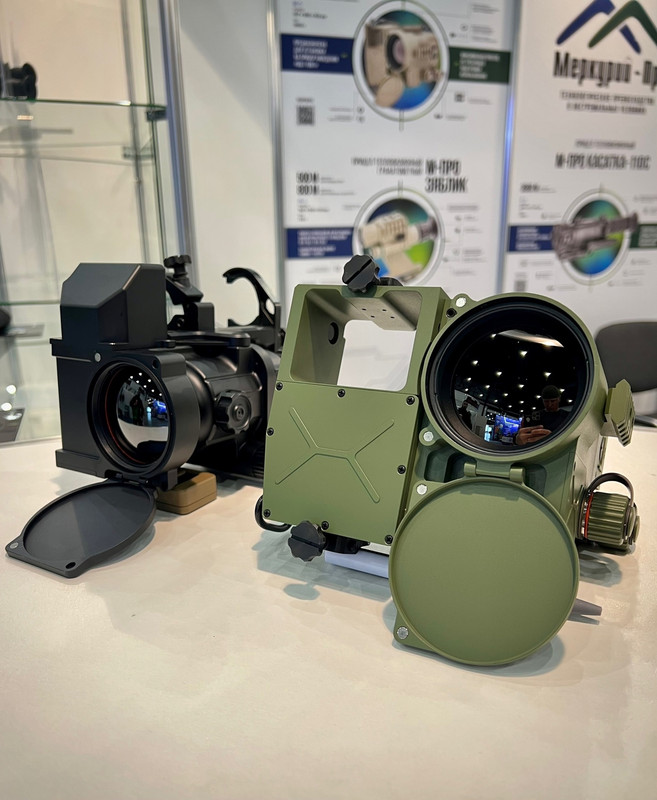 Spoiler
Spoiler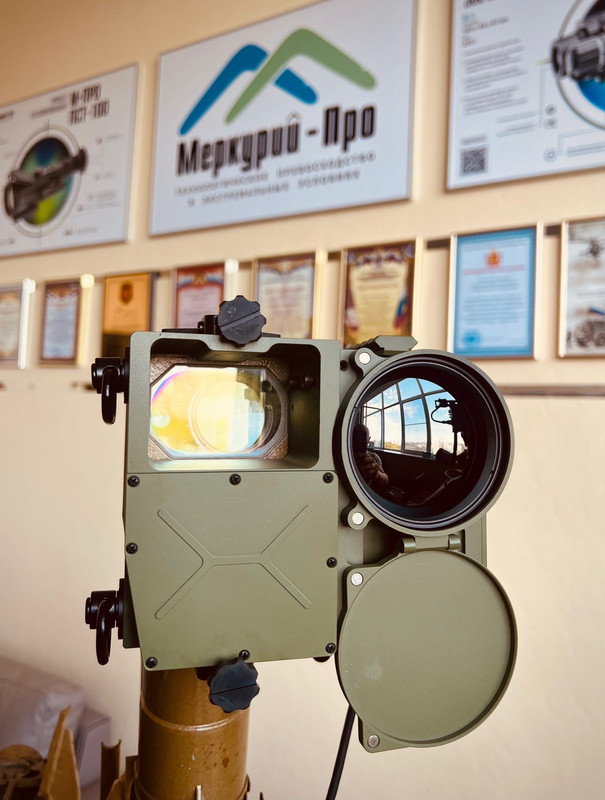

 Spoiler
Spoiler Quote
Quote"M-PRO F100"
THERMAL IMAGING ATTACHMENT
The thermal imaging attachment "M-PRO F100"
is designed to be mounted on the "Fagot" ATGM.
Ensures accurate shooting in any weather and climatic conditions.
Maximum simplicity, no need for preparation for control.
Installation on the standard sights of "Fagot".
It is possible to move the ATGM with the attachment installed.
Features
The range of ambient operating temperatures from -40 to + 50 °C
- Athermal lens that does not require manual focusing
■ Up to 17 hours of operation from Li-ion battery NCR 18650B
- Power supply from an external source (USB connector, 5V)
■ Analog video output PAL
- Automatic sensor calibration without shutter
Sealed impact-resistant metal housing provides stable characteristics throughout the range operating temperatures and reliable protection against fogging of the internal surfaces of the device, oxidation of electronic components throughout the service life of the device; degree dust and moisture protection: IP67QuoteTechnical specifications:
RF detection range (Johnson's criteria), m: 1300
NATO target recognition range, m: 4000Operating temperature range, °C: from -40 to +50
Protection: IP67
Continuous operation time (under normal climatic conditions), at least, h: 17
Type of power elements and their quantity: Li-ion battery NCR 18650B, 2 pcs
Time to reach operating mode after switching on, not more than, sec: 5
Operating range, μm: from 8 to 14
Number of detector sensitive elements, pixels: 384 x 288
Detector element size, μm: 17
Detector frame rate, Hz: 50
Sensor temperature sensitivity, no worse than μK: 40
Color OLED display, pixels: 800 x 600
Dimensions, mm: 157 x 190 x 152
Product weight, without power sources, kg: 1.9 -
https://t.me/bayraktar1070/2081
QuoteWitnesses of Bayraktar
The tank is dead, long live the tank!The amount of destroyed equipment in the fields of Donbass has recently increased significantly. Armored vehicles are being hit the front line, on the march, and in parking areas. The availability of weapons against AFVs is increasing every day. I recently came across statistics according to which 2/3 of Russian tanks destroyed since the beginning of the year were taken out by FPV drones. "Detanking" is taking place on the battlefield, which means that more tanks are burning than are being produced in the entire world. Therefore, many have come to the conclusion that armored vehicles are living out their last months on the battlefield.
Modern models of armored vehicles really cannot withstand a raid by a dozen FPV drones. But under any conditions the infantry will have to be thrown forward. How to do this when the whole sky is buzzing? To do this, we need a platform that will carry electronic warfare and air defense that will shoot down drones. To operate such systems, a powerful power plant on a moving chassis is required. It won’t be cheap, so it needs to be protected with armor from stray bullets and shrapnel. Moreover, it is advisable to add a cannon that will destroy enemy fortifications.
And in the end, having made a circle, we again come to the tank, with a slightly modified concept. If it can provide protection from UAVs within a radius of 200 meters, then such vehicles will become the umbrella that will allow the infantry to move forward. Electronic warfare is already being actively developed, but with the physical destruction of drones everything is not so good. We urgently need reliable and widespread solutions. And as far as I understand, old systems like “Arena” do not fit the changed realities. I'll say even more. The one who solves the problem of protecting armored vehicles from FPV drones will win the battle for Ukraine.
Alexander Kharchenko
QuoteMilitary correspondent Alexander Kharchenko again raised the important topic of protecting armored vehicles in the face of the appearance of thousands of FPV drones on the battlefield, which can attack tanks in the least protected projections and lead to losses exceeding a month’s production.
A lot has been said about on-board electronic warfare systems, and industrial developments can increasingly be seen on vehicles. Much less attention is paid to “air defense,” although it is necessary to the same extent to combat drones as jamming systems.
🔻Even the most advanced “jammers” will not be able to protect a tank from the same UAVs with automatic target acquisition, which are increasingly used in the SMO zone. Under these conditions, specialized and simplified active protection systems against drones are becoming a mandatory element at least for tanks.
What could such an “air defense” look like? For example, turrets with buckshot with an integrated target detection system via an optical channel. There are several potential design options, and the most effective one will only be found during development and testing.
❗️Perhaps right now such things look a little futuristic and implausible. But just a year and a half ago, it was difficult to imagine hordes of FPV drones hunting even individual soldiers. Technological progress is inexorable, and we are facing a new round of “shield and sword competition.”
Yes, “air defense” for equipment requires financial costs for development and production. However, this is in any case cheaper than losing tanks worth hundreds of millions of rubles each due to losses from drones costing 80 thousand rubles. Not to mention the lives of the crews of armored vehicles burning on the battlefields due to the lack of such means.
#industry #Russia #Ukraine
@rybarI just leave this here
 Spoiler
Spoiler

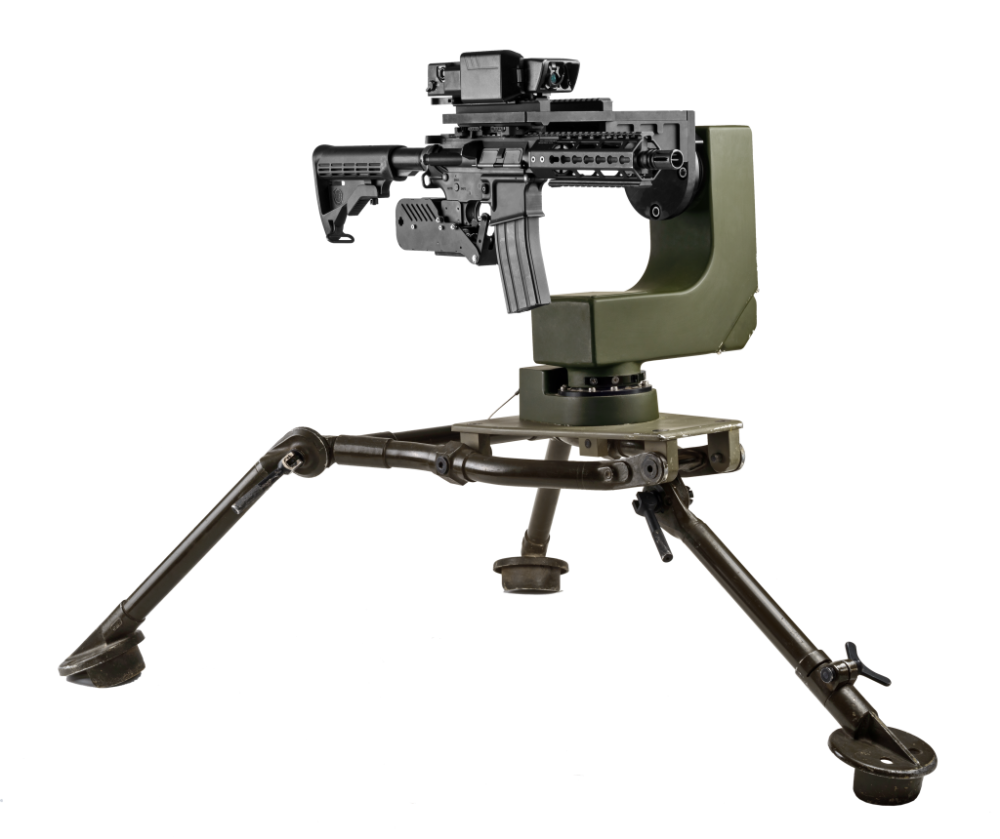
-
On 4/6/2024 at 8:34 PM, LoooSeR said:
DT-BTR with Spitsa unmanned turret in trailer of a military show.

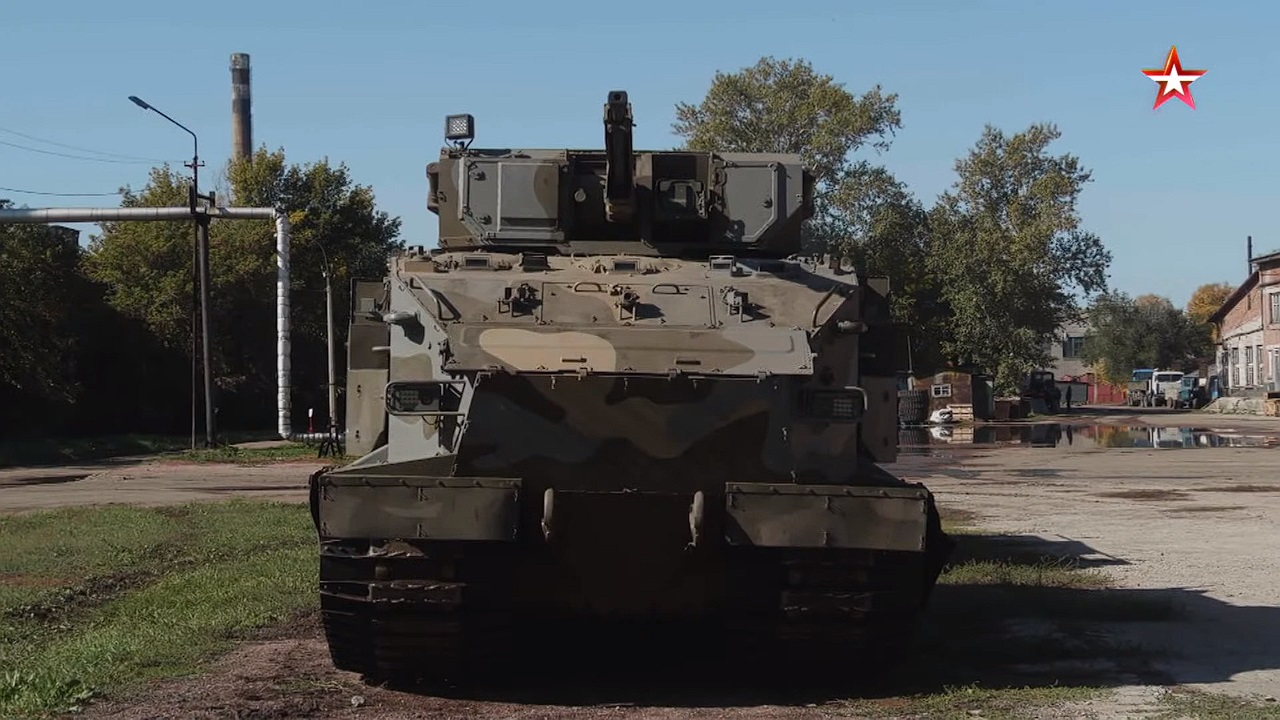 Spoiler
Spoiler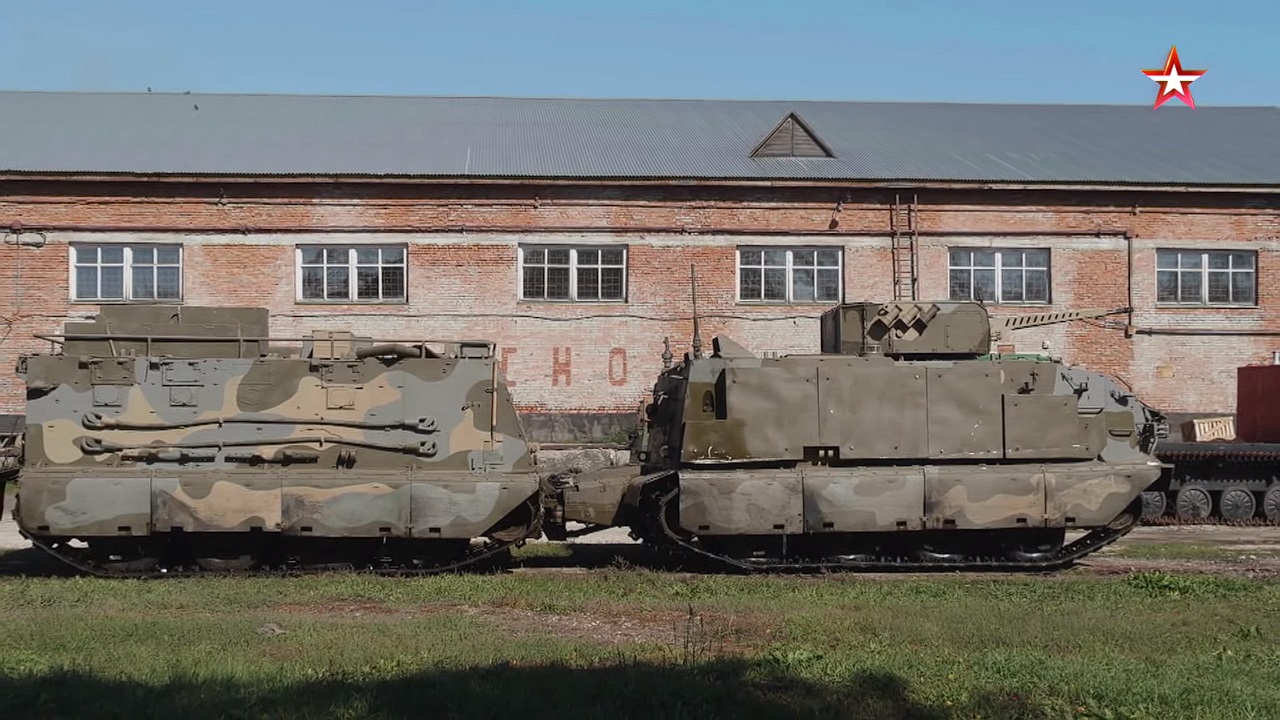
-
-
T-90M with engine rear section protection against FPV drones

-
22 hours ago, Dominus Dolorem said:
Just noticed that the NRTK Kurier UGV does not appear to have any remote elevation mechanism and the traverse mechanism (often blurred on video) seems to consist of a pneumatic cylinder.
Are these photos and videos just tests to see if the chassis can support stuff?
IDK about what they were testing on those pics. There are bunch of different UGVs that are undergoing tests by Ru army units or volunteer organisations lately.
QuoteEspanyola volunteer unit testing some UGVs/drones
 Spoiler
Spoiler





-
https://globalaffairs.ru/articles/ot-speczialnoj-k-voennoj/
QuoteAt the beginning of the third year of Russia’s special military operation (SMO) in Ukraine, it can be stated that the events that began in February 2022, like any major war in recent centuries, led to the collapse of many ideas, theories and authorities in the political and military fields. The initiators, the main participants, and observers from all sides received and saw something that they did not plan or expect.
QuoteThe failed "Dunay"
Returning to the beginning, we can conclude that the plan of the campaign actually provided for a special operation first, and a military operation second, and assumed that the problem could be solved without large-scale military operations and organized military resistance. Future historians will answer why Moscow considered it possible to implement such a scenario, especially taking into account the fact that the Armed Forces of Ukraine (AFU) had already been waging a continuous “small” war in the Donbass since 2014. The SMO plan itself is recognizable and, in fact, reproduced the Soviet plan for sending troops into Czechoslovakia in 1968, known as Operation Danube. The main elements of the Northern Military District's plan corresponded to it, including the capture of the capital's airport by landing forces with the subsequent transfer of airborne units there to blockade the capital and massive rapid marches of armored and mechanized units to large cities to block them and subsequent rapid "cleansing" by the forces of "light units", special forces and special services.The difference between the circumstances of the Danube and the operation of February 2022 was not only that the political leadership of Ukraine and the command of the Ukrainian Armed Forces resisted. “Danube” was carried out by a powerful mobilized group of troops of the Warsaw Pact Organization, significantly superior to the forces of the Czechoslovak People's Army. The initiators of the North Military District decided to send troops into a state that was larger than Czechoslovakia in area, using a limited group estimated at approximately 185 thousand people (although it included most of the Russian Ground Forces and Airborne Forces), or about 140 battalion tactical groups. Even taking into account the mobilization of the forces of the DPR and LPR (about 110 thousand more), it was inferior in number to the armed forces and security forces of Ukraine, which had already been partially mobilized. The mobilization of the priority reserve, which began in Ukraine the day before the start of the Northern Military District, which replenished the Armed Forces of Ukraine in a matter of days with 150 thousand military personnel with experience of combat operations in the Donbass (participants in the “anti-terrorist operation” - “Joint Forces Operation”) and made it possible to complete the main brigades of the first line, made the ratio forces completely unfavorable for Russia.
Under these conditions, the outcome of the first stage of the Northern Military District was determined by the balance of forces alone. Russian groups scattered in eight directions were quickly stopped and forced to get involved in battles with a numerically superior enemy. In the north, the main strike groups of the Northern Military District forces, moving from Belarus through the Pripyat swamps and from Russian territory through the Sumy and Chernigov regions, reached Kyiv, but were unable to either block it (let alone occupy it) or ensure their extended communications. The landing in Gostomel, in conditions of fierce resistance and artillery shelling, turned from a bridgehead into a trap. In the Kharkov direction, the troops were stopped already on the approaches to Kharkov and at the border line. Attempts by hastily mobilized and insufficiently equipped forces of the DPR and LPR to push back the Ukrainian forces entrenched since 2014 from the line of combat contact in Donbass were unsuccessful. The inability to suppress Ukrainian air defense sharply limited the effectiveness of Russian aviation over the entire front line and territory of Ukraine, depriving the Russian Armed Forces of one of its main trump cards.
The greatest successes have been achieved in the south, where, apparently, some “negotiations”, “sleeper” agents and supporters of Russia worked (and only there). This allowed the troops leaving Crimea to occupy the territories of the Kherson and southern parts of the Zaporozhye regions in a matter of days, with minimal resistance from the Armed Forces of Ukraine, in the east to reach Mariupol, and in the west to develop an offensive towards Nikolaev and bypassing it from the north to Odessa. However, these two main prizes of the Black Sea region were not won. Landing ships with marine forces assembled in advance from all three European fleets of the Russian Navy were stopped by mines and “unexpectedly” anti-ship missiles of Ukraine’s own production, Neptune, that appeared in Ukraine’s arsenal. The Armed Forces of Ukraine, who came to their senses on land, quickly stopped the advanced forces of the Russian troops from Nikolaev and Voznesensk, which took them rather by surprise, and by mid-March they drove them back to the border of the Kherson and Nikolaev regions.
QuoteRussia found itself in a state of large-scale war on a huge front with a numerous and well-armed enemy, to whose aid all Western powers came, introducing unprecedented economic sanctions and beginning massive and increasing supplies of weapons to Kyiv.
QuoteThe most problematic from the very beginning was the Kiev direction, where, in fact, a group of troops from two military districts of the RF Armed Forces was “planted” in the forests and swamps around Kyiv without visible prospects for its effective use and with a constant risk for communications “strung” on forest roads through the Sumy and Chernigov regions that actually remained under the control of the Kiev forces. The group was not enough to capture and even capture and siege Kyiv. By and large, only the extreme slowness and lack of enterprise of the Ukrainian command and the Armed Forces of Ukraine as a whole prevented the situation in the Kiev direction from developing into an acute crisis for the Russian side. With a more energetic enemy, Russian troops near Kiev would have faced a repeat of Warsaw 1920.
The Russian command realized this state of affairs; already somewhere in mid-March 2022, a decision was made to withdraw troops from Kyiv; by April 5, they had completely withdrawn from the Kyiv, Sumy and Chernigov regions and from the north of the Kharkov region beyond the borders of Ukraine. In fact, at this point the campaign with decisive goals in Ukraine can be considered completed, since its main goal was, obviously, the capture of Kyiv. The Russian leadership naturally presented the withdrawal of troops from Kiev and northern Ukraine as an “act of goodwill” during peace talks in Istanbul. Apparently, it was this “act”, and not the intrigues of Boris Johnson, that primarily led to the collapse of the Istanbul negotiations. The retreat of an army from the enemy's capital never served to compromise peace.
Kyiv considered the withdrawal of Russian troops from the north a triumph of resistance policy and perceived it as a turning point, deciding that it could achieve the complete expulsion of Russian troops. This was reinforced by a wave of Western socio-political and military support, which reached its peak in the spring of 2022. On May 9, 2022, the US Congress even passed the Lend-Lease law for Ukraine, which theoretically opened up access to an unlimited amount of American military assistance. The West believed in the possibility of using a set of military and economic measures to inflict a “strategic defeat” on Russia, which, under favorable conditions, could lead to a change of power in Moscow.
After an unsuccessful attempt at a compromise exit from the war and receiving a number of painful blows (the flagship of the Black Sea Fleet, the missile cruiser Moskva, was sunk on April 13–14), the Russian side could only continue the military campaign, rethinking its goals and capabilities. As far as one can judge, the new plan provided for the use of troops withdrawn from the north of Ukraine to completely liberate the territory of the DPR and LPR and, possibly, partially encircle the forces of the Ukrainian Armed Forces on the Left Bank of Ukraine. Presumably, achieving these goals was considered possible by May-June. From mid-March 2022, an offensive was carried out in the Izyum area, intensified in April; the initial plan, apparently, was to reach the rear of the Severodonetsk group of the Armed Forces of Ukraine through Slavyansk and a more ambitious and large-scale offensive towards Zaporozhye towards Russian forces in the south. Subsequently, offensive actions began in several more directions in the Kharkov region and LPR. However, the Russian Armed Forces are faced with a serious shortage of forces and resources. After the withdrawal of part of the battalion tactical groups for replenishment in the Russian Federation, by mid-April 2022, the Russian Armed Forces had no more than a hundred thinned BTGs along the entire front line, and the BTGs transferred from the northern direction were introduced into battle one by one, not providing the necessary build-up of forces.
In Ukraine, in March 2022, the third wave of mobilization was announced, covering graduates of military departments and persons who had not previously served in military service, which by mid-April brought the number of the Armed Forces to 400 thousand people, not counting those in training, and by at the end of May - up to 600 thousand people. Thus, the Ukrainian Armed Forces gained significant numerical superiority over the combined group of the Russian Armed Forces, the forces of the DPR and LPR and PMCs, and the Russian offensive was carried out, in fact, against a numerically superior enemy.
An important factor in the first stage of hostilities was the struggle for Mariupol from March 2 to May 16, 2022. The siege of the city became a harbinger of future “positionality” in this conflict and shackled the 30,000-strong group of “allied forces”, largely predetermining the impossibility of developing Russian successes in the south or offensive actions in Donetsk. The offensive of the Russian Armed Forces in the Izyum direction, due to the lack of superiority in forces over the enemy, also developed slowly and difficultly and, as a result, instead of encirclement, it simply came down to “pushing out” the enemy at the tactical level. At the beginning of May 2022, Russian forces encountered serious difficulties and losses when attempting to cross the Seversky Donets near Belogorovka, when the ineffectiveness of “traditional” methods of massing forces and means was revealed in the conditions of this war. By the beginning of July 2022, after the occupation of Lisichansk, the Russian offensive ran out of steam. Almost the entire territory of the Lugansk region (LPR) and the eastern part of the Kharkov region was occupied, but Ukraine retained most of the Donetsk region (DPR). It was not possible to even reach Slavyansk and Kramatorsk. This campaign bled the forces of the Russian Armed Forces, which basically remained a group that entered Ukraine in February 2022. Ukraine launched “permanent mobilization”, gaining more and more tangible numerical superiority.
QuoteThe Road to Positionality
By the end of spring - beginning of summer 2022, the determining factor in the hostilities was Ukraine's receipt of Western weapons and technical equipment. From the very beginning, the colossal reconnaissance capabilities of the West were placed at the service of the Armed Forces of Ukraine, which ensured superiority in reconnaissance and target designation. This is especially true for space reconnaissance, provided by a complex of Western military reconnaissance satellites and numerous commercial satellite Western geoimaging companies. This makes it possible to monitor the combat zone and the territory of the Russian Federation continuously and almost in real time.Elon Musk’s Starlink “universal” satellite Internet system from SpaceX quickly became a key Ukrainian combat control and data transmission system, catapulting the Ukrainian Armed Forces into the 21st century. With the ability to operate anywhere, distribute streaming information to a huge number of individual consumers, maintain Internet communications on the move and control vehicles at any distance, Starlink gave the military capabilities that even the US military did not expect to have until the mid-2030s . With Starlink, the reality has become the connection of any “unit” to the network anywhere, the exchange of video streams online, the creation of battle chats and other control systems for the exchange of data between thousands of subscribers in real time, high communication secrecy due to the communication channel narrowly directed to the satellite, the ability to help Wi-Fi supply networks for tactical communications at each access point. In fact, every combat “unit” and every weapon, when connected to Starlink, became network-centric with the capabilities of target designation, guidance and adjustment in real time and with the potential of high-precision weapons.
155-mm modern long-range artillery and the HIMARS and MLRS ground-based missile systems with high-precision GMLRS missiles with a range of up to 90 km, which began to be used from the end of June 2022, in combination with the above reconnaissance, target designation and network-centric means of communication, control and data transmission, made it possible the Ukrainian side will gain fire superiority and high-precision long-range strike capabilities in the second half of 2022, significantly complicating the position of the Russian Armed Forces.
The main result of the use of HIMARS Armed Forces with GMLRS missiles in the summer of 2022 was not so much the destruction of headquarters and ammunition depots, but rather attacks on the locations of military units and reserves. The Russian side had to pull reserves deeper into the controlled territory, and partly even into the territory of the Russian Federation. Combined with the general lack of forces in the Russian Armed Forces and the quantitative superiority of the Armed Forces of Ukraine, this was precisely the prerequisite for the successful Ukrainian offensive in the Kharkov region in September 2022. Unable to quickly and effectively bring the withdrawn reserves into battle, the Russian side abandoned the eastern part of the Kharkov region and built a line from the introduced reserve forces on the western border of the LPR, at which the Ukrainian raid was stopped and which formed the basis of the front line in the north that exists today.
Ukraine’s first real military success acutely confronted Moscow with the problem of the discrepancy between the size of the group and the enemy’s potential. On September 21, 2022, the Russian leadership had to carry out partial mobilization for the first time in the post-Soviet period, calling up more than 300 thousand people. At the same time, carte blanche was given for a sharp increase in the number of Wagner PMCs, which actually began to turn into a parallel army, including through the mass recruitment of prisoners in prisons - by January 2023, the number of Wagner reached 50 thousand people.
All these measures began to have an effect only by the end of 2022. In the meantime, Russian troops were lined up in a stretched “thin red line.” And in the fall of 2022, Ukraine, which found itself at the peak of a favorable balance of forces for it, had a unique chance to inflict a number of significant defeats on the Russian side with a possible large-scale political effect.
Ukraine could either continue offensive operations on the territory of the LPR, or try to make a breakthrough in the south from Zaporozhye to the Sea of Azov, cutting off Russian forces in the Kherson region and reaching the northern part of Crimea. It is unclear why Kyiv abandoned such beneficial directions for it - whether it was the cunning of the cautious and passive Ukrainian commander-in-chief Valery Zaluzhny, or, according to a number of new reports, a consequence of pressure from the Americans, who were skeptical about the ability of the Ukrainian Armed Forces to take such large-scale actions. Instead of an offensive with decisive goals, the Ukrainian side aimed at a more limited and at the same time politically advantageous task of squeezing Russian forces out of Kherson, the only regional center of Ukraine, which Russia occupied at the beginning of the Northern Military District.
Russian troops on the western bank of the lower Dnieper were supplied along several bridges, which became targets of precision strikes by GMLRS missiles. However, Ukrainian attacks on Russian positions near Kherson in September-November 2022 themselves were ineffective, accompanied by significant losses and became the first large-scale demonstration of a positional impasse, which fully manifested itself the following year. Nevertheless, damage to bridges across the Dnieper by missile strikes played a role. Fearing a supply crisis, the Russian command, on the initiative of Army General Sergei Surovikin, who became commander of the Joint Group of Russian Troops (Forces) in Ukraine in October, decided on November 9 to leave Kherson and withdraw troops from the right bank of the Dnieper. The withdrawal was carried out within two days with a high degree of organization and secrecy and with virtually no losses.
For Ukraine, the liberation of Kherson, carried out without fighting in the city itself, became a major military-political success that sharply increased its shares in the West. They came to the conclusion that if Ukraine is provided with large-scale military assistance, it will be able to drive out Russian troops itself, at least until the lines of February 24, 2022. Since the end of 2022, Western military supplies to Ukraine began to increase sharply, including the first shipments of tanks and infantry fighting vehicles. A training and education program for 12 Ukrainian brigades in the West was also launched. The Ukrainian military leadership, having received large reinforcements of people and equipment, began a large-scale increase in the combat potential and strength of the Armed Forces of Ukraine, including the formation of formations. By the spring of 2023, the number of Ukrainian Defense Forces (AFU and other security forces) exceeded a million people, and combat brigades exceeded a hundred.
The Russian command, after carrying out partial mobilization and increasing the influx of contract soldiers, also re-equipped forces in the Northern Military District zone and began forming new formations, announcing plans to increase the strength of the Russian Armed Forces in the future to one and a half million military personnel. Apparently, based on the fruits of mobilization, in the winter of 2022–2023. Moscow wavered between the options of an “optimistic-offensive” and a “cautious-defensive” strategy in Ukraine. A test of the “optimistic-offensive” option was expressed in the offensive in the Soledar-Bakhmut direction (from November), in which the main striking role was played by the Wagner PMC. On January 10, 2023, Soledar was captured, and after fierce fighting that lasted until May 20, Bakhmut was captured.
The Russian offensive, which stretched for almost six months, was accompanied by heavy fighting with little territorial progress and the almost complete destruction of occupied cities. This demonstrated the new face of the campaign, which was becoming increasingly positional in nature. At the end of winter and beginning of spring of 2023, the Russian side tried to carry out a series of local offensives in the Donbass - near Donetsk, in Marinka, on Ugledar, but they resulted in stubborn positional battles and had insignificant results or even ended in failure, like Ugledar.
All this led the Russian command to the final and most rational choice in favor of a defensive campaign strategy for 2023, relying on positional defense. Since the early spring of 2023, large-scale construction of a network of field positions and fortifications, called the “Surovikin Line,” began on the Russian side of the front, while reserves were accumulated at the same time. To replenish the troops, a plan was put forward to recruit 420 thousand contract soldiers into the army during the year, who were offered high salaries.
QuoteUkraine is losing its last chance
By the beginning of 2023, Ukraine had, in principle, significant chances of success in offensive actions. The Russian army in the combat zone experienced not only a significant shortage of personnel (the effect of mobilization was just beginning to be felt), but also a shortage of military equipment. Already in the summer and autumn of 2022, the Russian side began a massive withdrawal from storage bases of obsolete models of tanks, armored vehicles and artillery, including models from the 1950s–1960s, which miraculously survived the “cuts” of post-Soviet times, but this only partially corrected the situation. According to the sensational leak of files from the US Defense Intelligence Agency (DIA) through the social network Discord in the middle of last year, as of February 28, 2023, Russian troops had 419 tanks, 2,928 armored vehicles and 1,209 artillery systems on the line of combat contact. The Ukrainian Armed Forces had 809 tanks, 3,498 armored vehicles and 2,331 artillery systems. The Russian side also experienced a serious shortage of ammunition.Thus, apparently, the first three months of 2023 were the time of the best balance of forces for the Armed Forces of Ukraine and the greatest decline in the combat potential of the Russian army. However, the Ukrainian leadership constantly delayed the start of the offensive, waiting for the arrival of the maximum amount of Western military equipment and the completion of training of new brigades in the West. The other side did not sit idly by, and the balance of power began to shift. But the magic of Western technology and “Western methods” was so great that it gave the Ukrainians a feeling of self-confidence and disdain for the enemy. March, April, May passed, and only at the beginning of June did Ukrainian forces finally begin to take active action.
Although many expected some non-standard and creative moves from the Ukrainian Armed Forces (or rather, from their Western planners), from June 4, the Ukrainian command launched an offensive along the most obvious and promising direction of greatest operational-strategic success from Zaporozhye to the south to the Sea of Azov - there, where the Russian side prepared best. The division of the Ukrainian attack in the south between two directions - Orekhovsky, conditionally towards Melitopol, and Vremyevsky, conditionally towards Temryuk and Berdyansk - could still be understood. But at the same time, the Ukrainian Armed Forces began to attack in a completely separate third direction in the north, trying to regain the lost Bakhmut. Some of the most experienced brigades were deployed there, while in the south the main contribution came from freshly formed Western-trained brigades. The meaning of the dispersion of forces between the main southern direction and Bakhmut remained unclear both to observers and, judging by American media reports, to Pentagon curators.
QuoteThe Ukrainian command created a magical cocktail of delayed preparations, lack of operational and strategic surprise, dispersal of forces and disregard for the enemy.
QuoteIn theory, all this could have been offset by tactical successes on the front line, but this did not work out either. Positionality manifested itself on a full scale - attacking columns and formations of armored vehicles of the Armed Forces of Ukraine ran into mines, crowded together, and became targets of beatings using ATGMs, artillery and drones. Despite the superiority of the Ukrainians due to Western assistance in reconnaissance and target designation and the presence of high-precision weapons, they failed to achieve effective fire superiority and suppression of Russian artillery in the offensive zone of the Ukrainian Armed Forces. As a result, the offensive in the south resulted in a slow, bloody “gnawing through” of Russian positions; already in the second half of June, the Ukrainians stopped relying on the vaunted Western armored vehicles and switched to purely infantry assault operations in small units.
In the Orekhovsky direction, the village of Rabotino, which, according to Ukrainian plans, was supposed to be taken on the first day of the offensive, was occupied by the Ukrainians only by the end of August. During September, the Ukrainian Armed Forces advanced a couple of kilometers southeast of Rabotino, at which point the offensive finally fizzled out. To the east, in the Vrem'evsky direction, in June the Ukrainians were able to cut off the so-called Vrem'evsky bulge, which jutted out several kilometers into their positions, but in the next three months they managed to advance only 2–3 km to the south. By the end of the summer, in fierce battles, the Ukrainian Armed Forces “bent” the front line several kilometers south of Bakhmut, but there was no talk of any encirclement, much less taking the city. Contrary to popular belief, the notorious “Surovikin Line” played virtually no role in repelling the Ukrainian offensive in the south - in most cases, the Ukrainians simply did not reach it, with the exception of one section southeast of Rabotino.
The domestic political upheaval in Russia, which it had so much expected, did not help Ukraine – the rebellion of the Wagner PMC that broke out on June 23–24. The stupid performance of the Wagner leaders, who did not fully understand what they wanted, quickly “deflated” and, as usual with such outcomes, led to the consolidation and strengthening of the positions of the Russian authorities.
QuoteFor Ukraine, the failure of the 2023 summer offensive became a symptom of a fundamental military-political crisis, demonstrating the lack of real means and resources for a military victory over Russia.
QuoteIt is this understanding that causes Western countries to hesitate regarding the volume of military assistance. If the results of the 2022 campaign gave Kyiv a large credit of military-political trust in the West, the 2023 campaign largely deprived it. Even with new large-scale Western military supplies, the balance of forces at the turn of 2022–2023 is uniquely favorable for Ukraine. will never happen again.
The last chord of Ukrainian offensive actions in 2023, and, as can be judged, undertaken primarily to demonstrate at least some success to the West, were landings in September-October by small forces on the left bank of the lower Dnieper, which made it possible to form several small bridgeheads. These bridgeheads (the most significant in Krynki) from an operational point of view turned out to be a dead end, since they reproduced the very positionality that fettered and paralyzed the rest of the front.
QuoteAt a dead end
Another aspect of the failure of the Ukrainian offensive in the summer of 2023 was the inability to “grind” and deplete significant forces of the Russian Armed Forces. The Russian army retained its main forces and reserves, which made it possible to move on to intensifying operations at the front. Already at the beginning of July 2023, Russian troops launched an offensive in the north in the Kupyansk direction, trying to recapture part of the territories lost in September 2022. Although the successes were small, since the fall of 2023, as the Ukrainian offensive efforts faded, Russian forces launched a series of attacks along almost the entire front, quickly forcing the Ukrainian Armed Forces to lose the initiative and go on the defensive.The most significant Russian offensive since early October 2023 has targeted Avdiivka, a western suburb of Donetsk firmly held by the Ukrainian Armed Forces since 2014. Even the success achieved there and the ongoing Russian attacks in various sectors confirm the lack of means to decisively overcome positionality. Nevertheless, the Russian side maintains large-scale pressure on Ukrainian positions along almost the entire length of the line of combat in the Northern Military District zone, creating tactical crises for the Ukrainian Armed Forces in a number of directions. Apparently, the active strategy of “inflicting many cuts” on the enemy is designed to exhaust the Ukrainian Armed Forces and create the preconditions for “shaking” the Ukrainian front and achieving more significant successes. However, this strategy is very costly for the Russian Armed Forces in terms of losses and expenditure of resources and can lead to excessive depletion of forces, which, in turn, will again transfer at least part of the initiative to the Ukrainian side - which is probably what Kyiv’s calculations are now based on.
Deep positionality, combined with a lack of strength on both sides, dooms them in 2024 to a long positional struggle. As the struggle throughout the year has shown, both sides are unable to translate tactical successes into operational ones. Now the Russian Armed Forces hold the initiative along almost the entire front line, and the Armed Forces of Ukraine have switched to strategic defense, which is still quite stable and does not allow Russian troops to achieve anything more than partial tactical successes. Ukrainian forces also retain significant reserves, including the bulk of Western heavy weapons received in 2023, and are awaiting receipt of Western combat aircraft, the F-16 fighter jets. At the same time, political uncertainty regarding further volumes of military assistance (primarily from the United States) does not allow Kyiv to formulate clear campaign plans for 2024 and forces it to adopt a wait-and-see strategy. The main problem for the Ukrainian Armed Forces seems to be not so much the lack of weapons and ammunition as the reluctance of the Ukrainian leadership, for political reasons, to launch a full-fledged mobilization of the male population under 25 years of age (currently only people over 30 years of age are subject to mobilization).
The potential of the RF Armed Forces in 2024 will also be largely determined by the readiness of the country’s leadership to resort to new mobilization measures, since the potential for recruiting from contract soldiers is decreasing.
By the beginning of 2024, both sides apparently had comparable strengths at the front. Russian President Vladimir Putin stated that there are more than 600 thousand people “in the Northern Military District zone”; Ukrainian and Western estimates give approximately 400–450 thousand people for the Russian Armed Forces directly on the combat line. Ukrainian official sources estimated the number of so-called Ukrainian Defense Forces by the end of 2023 at approximately 1.1 million people, including up to 800 thousand in the Armed Forces of Ukraine. At the front, apparently, there were a number of people comparable to those given for Russia.
Both sides are fighting in approximately the same style and, apparently, with a comparable level of losses.
QuoteIn general, as far as one can judge, the ground forces of both sides are at the same or comparable level of organization, weapons, training, command staff, culture, morale and other things - representing in a sense “one people.”
QuoteImmediate prospects
Both warring parties and the West are not ready for a peaceful settlement; a military-political situation is emerging similar to the positional period of the Korean War in 1951–1953 - an outcome that CAST predicted in a number of notes and comments in the event of a possible Russian-Ukrainian war back in 2021 and at the beginning of 2022. The positional deadlock can be overcome either by a sharp build-up of troops to gain multiple numerical superiority over the enemy, or through military-technical advantage - primarily a significant increase in the number and potential of high-precision weapons. Both are likely unattainable by both sides in the near future.This makes a protracted war inevitable with relatively stable fronts in the style of the Korean or Iran-Iraq war. It will be waged for years, to exhaustion, not with the hope of forcing the enemy to compromise, but rather in anticipation of internal changes in him, which will lead to a change in his political position. The end of the Korean War in 1953, even under status quo conditions, became possible only after the death of Joseph Stalin. Accordingly, for Ukraine and the West, the condition for change seems to be the departure of power in one form or another from Vladimir Putin (extremely unlikely for the foreseeable future), while the Russian leadership apparently pins its hopes on a possible change of power in the United States in the November 2024 elections . Therefore, Moscow most likely intends to continue hostilities at least until 2025, and possibly beyond, in anticipation of achieving powerful military superiority over Ukraine.
After the failure of the Ukrainian offensive in 2023, Ukraine and the West found themselves without a coherent war strategy. Implicitly, the main goal of the offensive was to create an internal political crisis in the Russian Federation, and, at a maximum, regime change in Moscow. In essence, Ukraine and the West bet on a jackpot back in the spring of 2022, which did not come out, and now it is unclear what to do next. For Ukraine and the West, there is essentially a choice between two options: to continue the “war against Putin” for a long time with unclear prospects and a constant threat of escalation, or to agree to a Korean-style truce on the terms of the status quo. Both options essentially propose postponing a real peace settlement until a post-Putin era in hopes of “more realistic leadership in Moscow.” So far, Vladimir Zelensky, most of the Ukrainian elite and the West reject the “Korean” version of the truce. This means that in 2024 the parties intend to “give the war another chance” and continue testing their strength in the conditions of a positional struggle to stress test resource capabilities and political will.
In conditions of a deadlock at the front and in an effort to exert primarily political pressure on the enemy, increased attention will be paid to politically sensitive and propaganda-significant attacks on each other’s rear targets, increasingly shifting to a “war of the cities” in the spirit of the Iran-Iraq War. This trend is clearly noticeable on the Ukrainian side, including in the form of its constant demands from the West for long-range weapons. So we can expect civilian casualties and damage to civilian infrastructure to increase.
Russian resources are significant, but simply increasing the production and repair of obsolete tanks, artillery systems and shells will not ensure military success, but will only turn the war into a permanent one, with many years of colossal expenditure of national wealth and sooner or later negative socio-economic and internal political consequences. The turning point can only be achieved by saturating the armed forces with modern means of warfare, primarily high-precision and unmanned, as well as reconnaissance, target designation and electronic warfare equipment. This is a non-trivial task from both a technological and military-industrial point of view. Russia is unlikely to be able to get by with cheap and palliative political, military and industrial solutions. The radical “stress test” started on February 24, 2022, the system will have to pass to the end.
Author: Ruslan Pukhov, director of the Center for Analysis of Strategies and Technologies (CAST).
-
Full-scale serial production of GTD-1250 tank engines has been resumed in Russia
https://tehnoomsk.ru/archives/12339
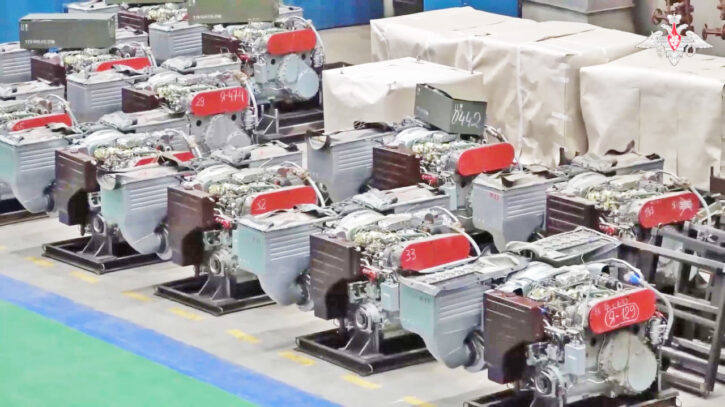 Quote
Quote/.../on the machine-building enterprise Kaluga Engine (Kaluga) has resumed full-scale production of gas turbine engines GTD-1250 for the T-80BVM main battle tank.
/.../
In the fall of 2023, for the first time in many years, the possibility of fully launching the production of tanks at Omsktransmash “from scratch” began to be considered (currently old hulls from storage bases are used, which are turned into full-fledged modern tanks - see the material https://tehnoomsk.ru/archives/9476 ). Now, with the full-scale launch of the GTD-1250 series to equip the T-80BVM, only one task remains unresolved - assembling tank hulls in Omsk. If this happens, the Omsk Tank Plant will regain its status as the second full-fledged tank production company after Nizhny Tagil.
At the same time, Omsktransmash is part of Uralvagonzavod, and such a situation entails a certain competition within one structure. If the Omsk plant were separated from the assets of UVZ and subordinated directly to Rostec (currently UVZ is part of the Rostec State Corporation, and Omsktransmash is part of UVZ), then this could benefit the entire tank building industry. Today in Russian tank building there is no competitive component between design bureaus, and there has been many years of stagnation in the development of new tanks.
-
Quote
On the afternoon of April 19, the General Directorate of Rocketry of the DPRK in the Korean West Sea tested the power of the ultra-large warhead of the Hwasar-1-la-3 strategic cruise missile and test launched the new Pelti-1-2 anti-aircraft missile.
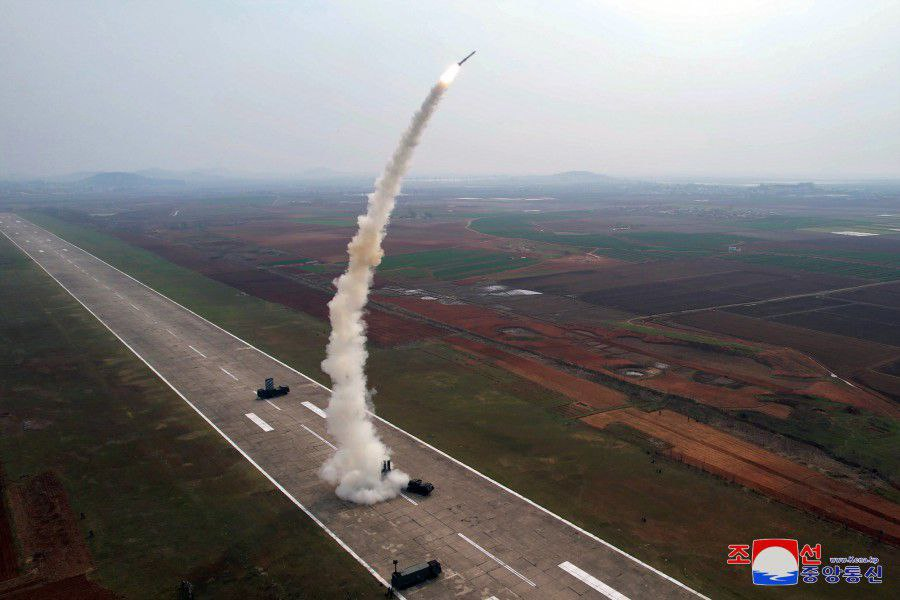
-
Quote
On the afternoon of April 19, the General Directorate of Rocketry of the DPRK in the Korean West Sea tested the power of the ultra-large warhead of the Hwasar-1-la-3 strategic cruise missile and test launched the new Pelti-1-2 anti-aircraft missile.

-
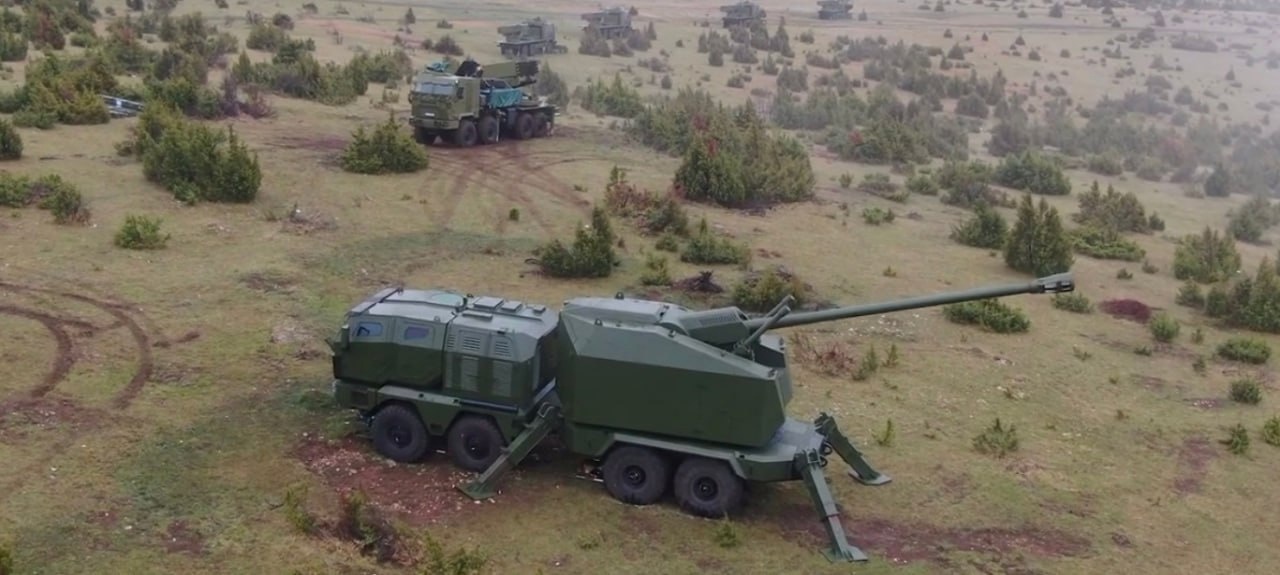
Serbian Nora B-52 SPG during recent exercises.
Spoiler

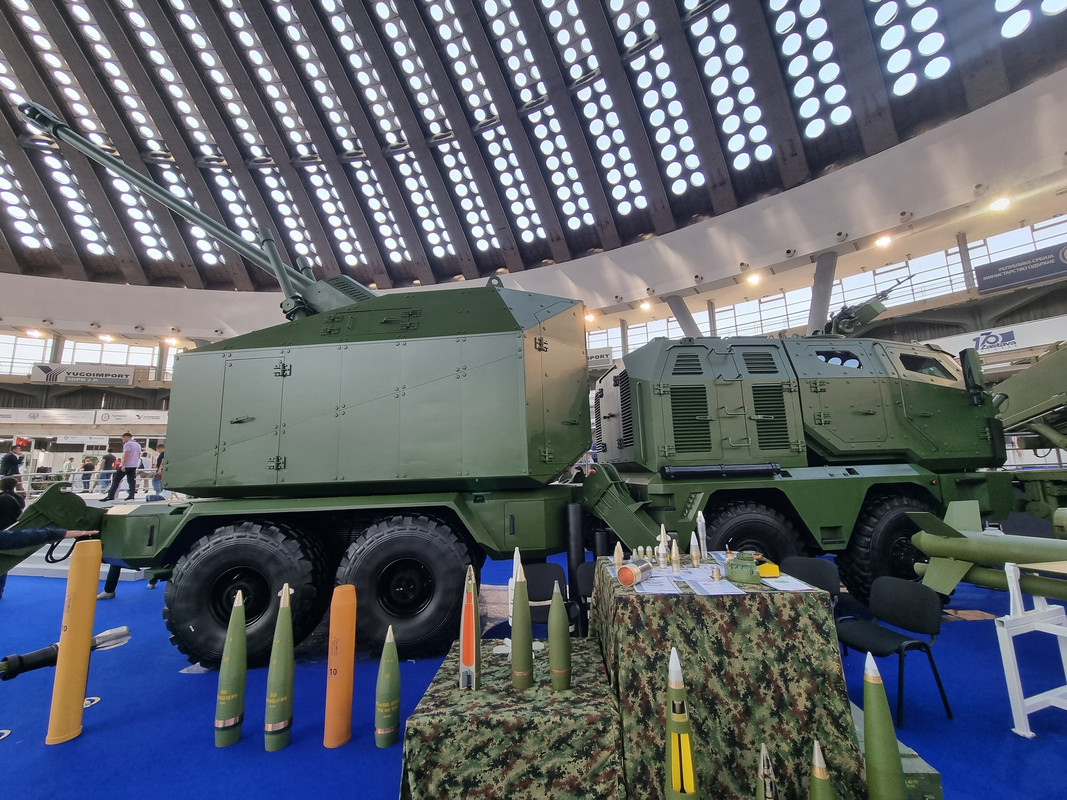
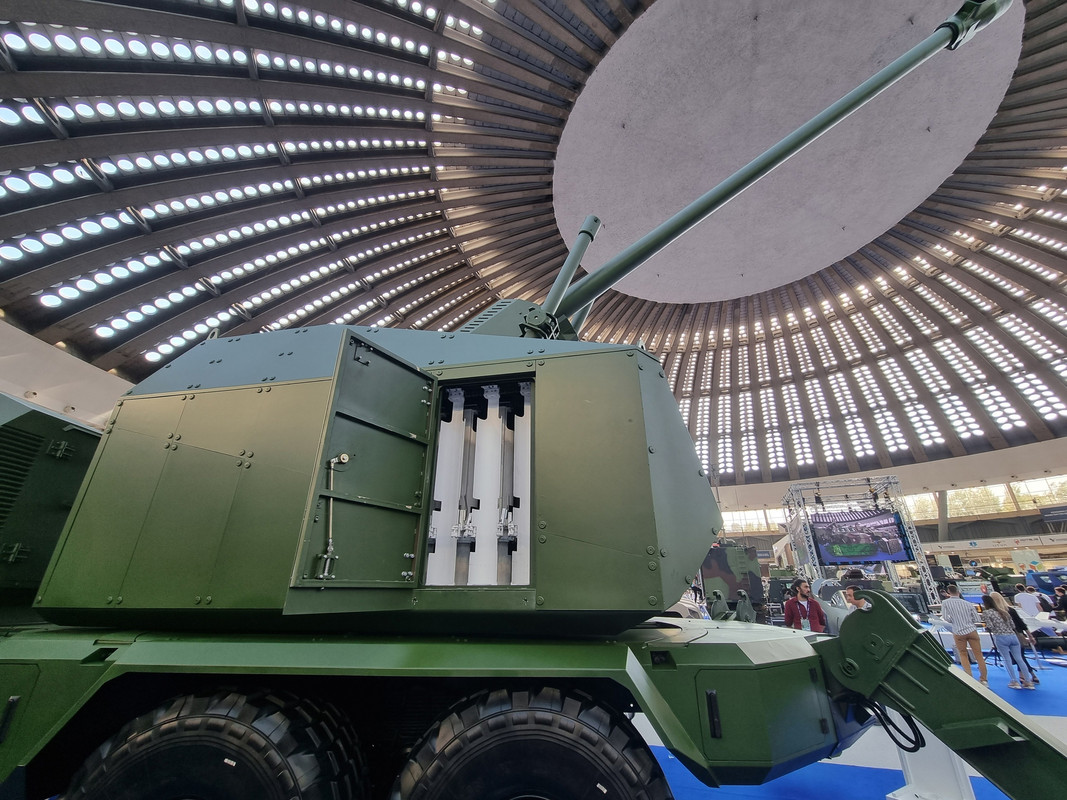
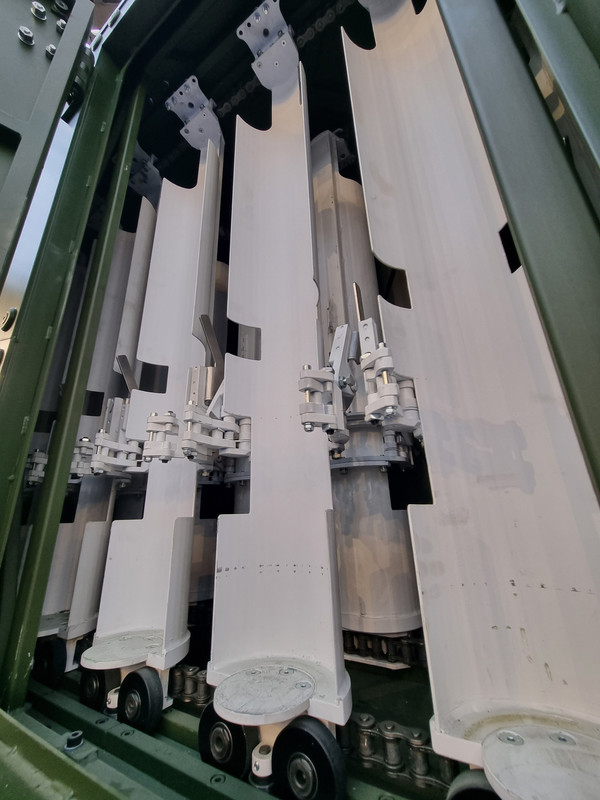
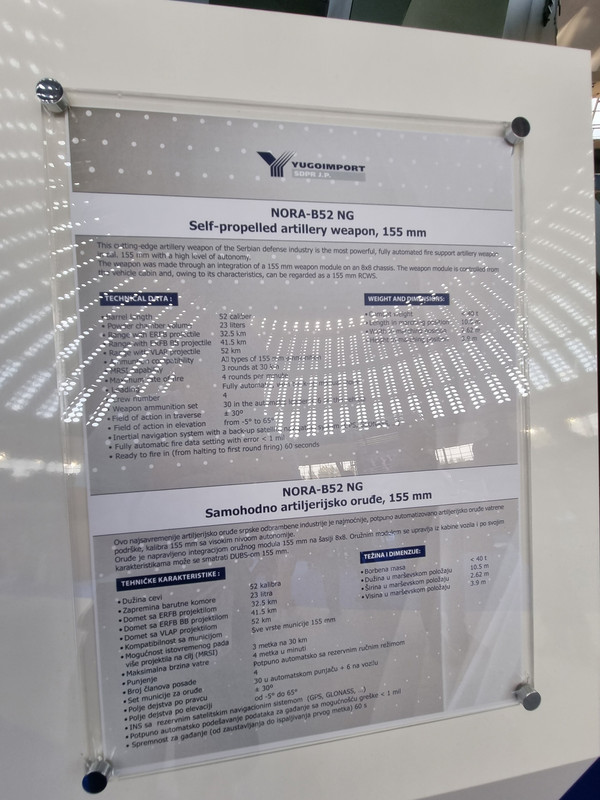
-
T-14 "Armata" in the training park of the Omsk Armored Engineering Institute. Shell loading device is visible in the lower rear part of turret.
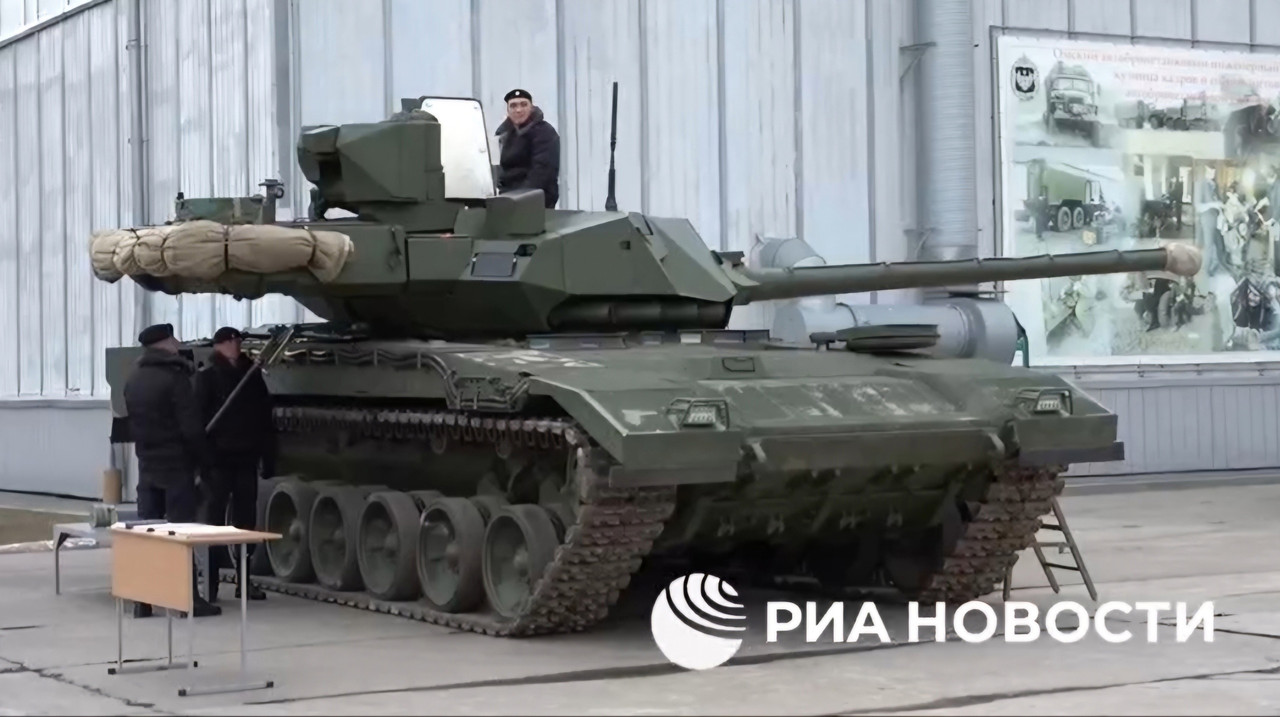 Spoiler
Spoiler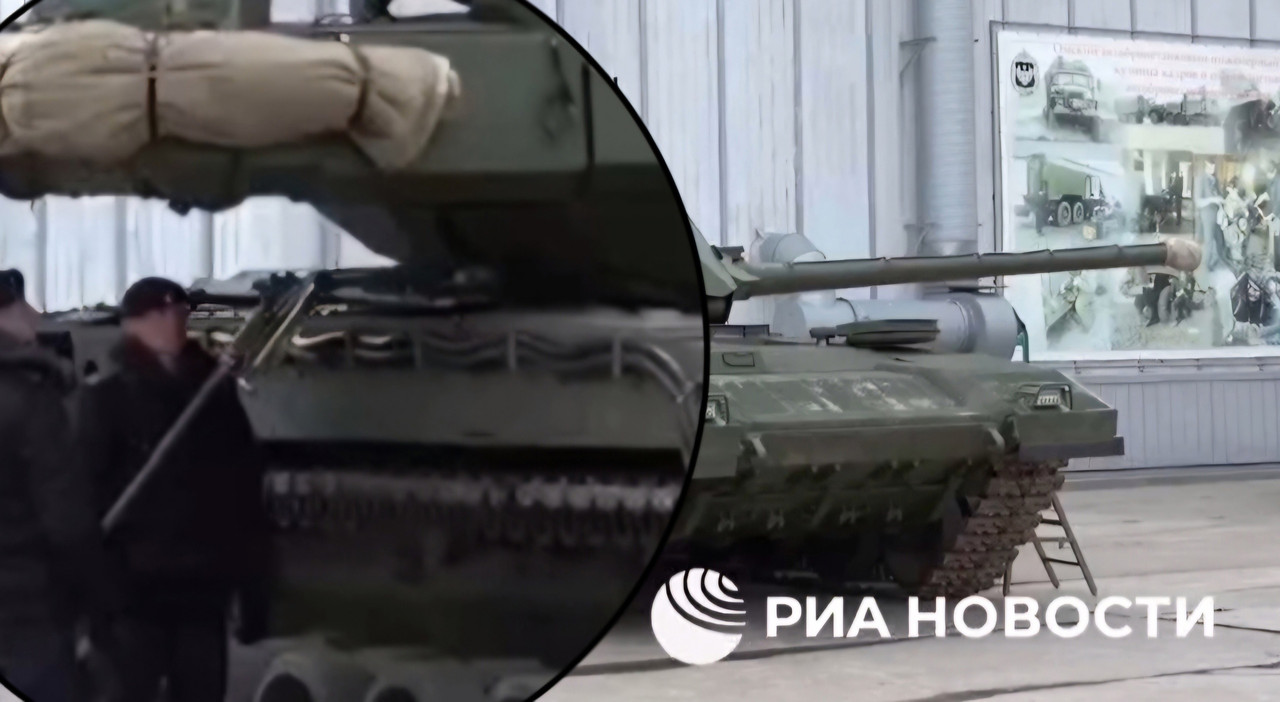
-
-
-
Proper orkish JDB tech
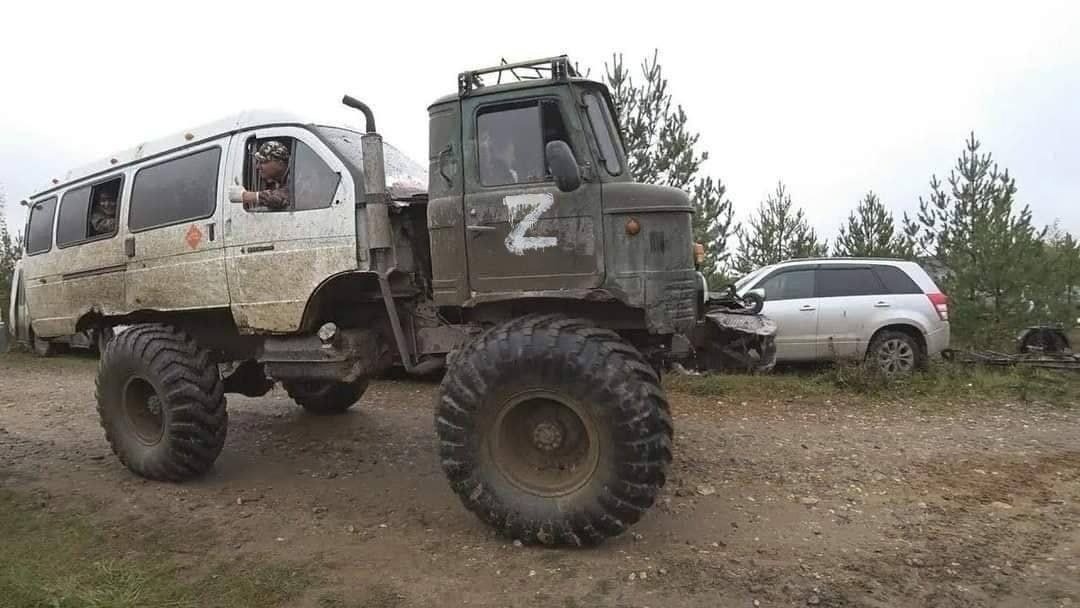
-
-
Iranian Bavar-373 AA system TELAR
 Spoiler
Spoiler
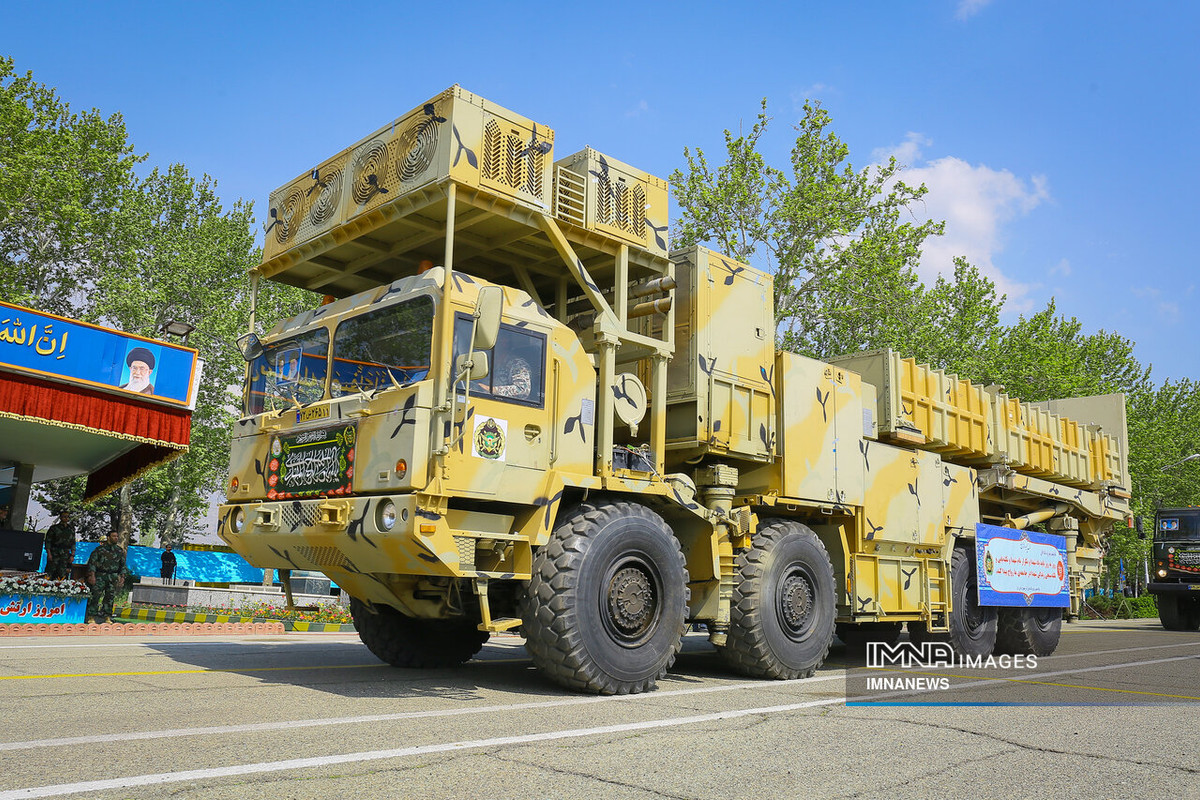
-
-
Islamic Resistance of Lebanon SF member with CZ Bren 2
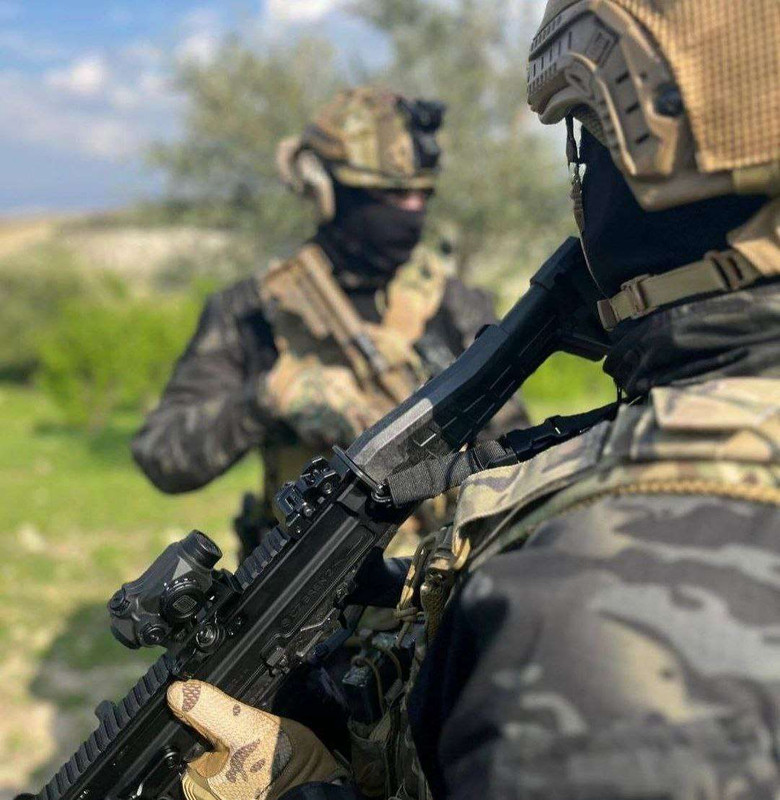
-
Russian sniper new toy - SVCh DMR with 1P88-4 sight.
 Spoiler
Spoiler
-
Different UGVs that were shown to Shoygu. 2nd one have Kornet launcher unit for 4 missiles. 4th pic shows some sort of launcher and mortar carrier UGV.
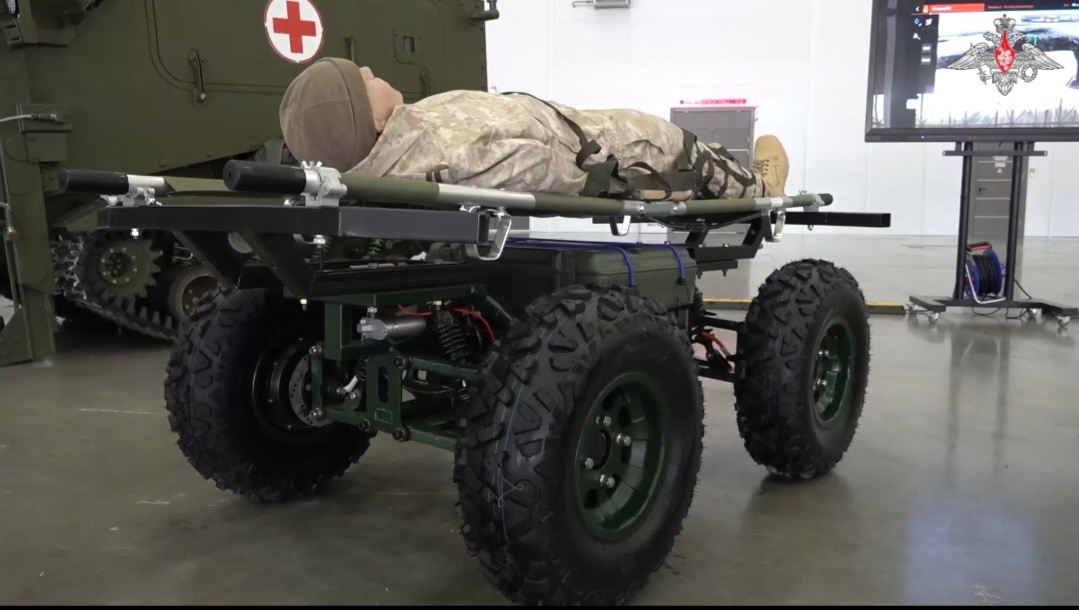 Spoiler
Spoiler
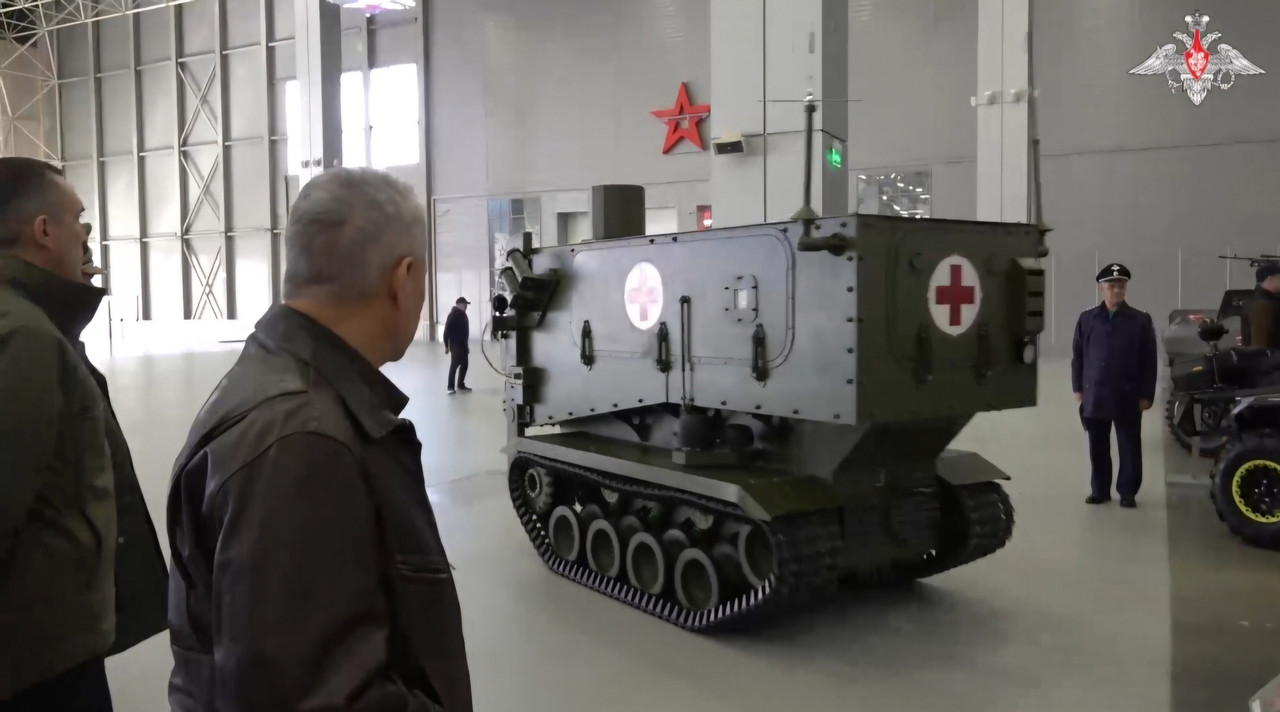
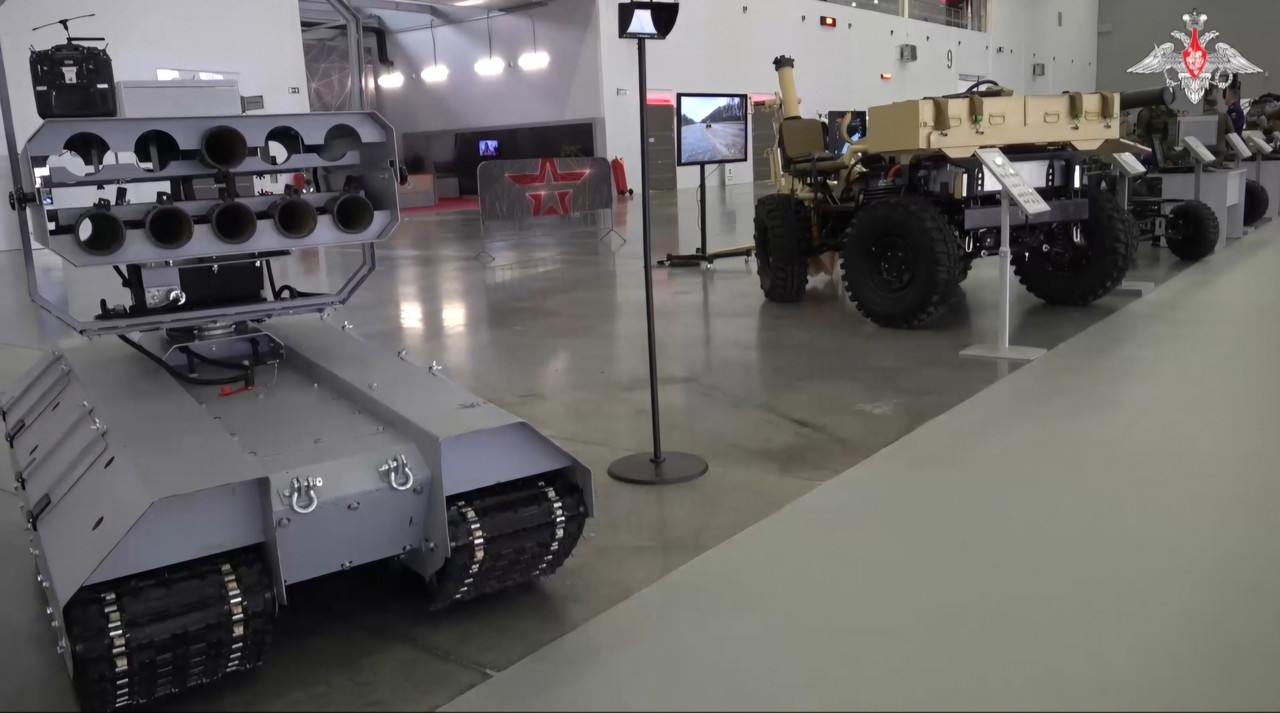
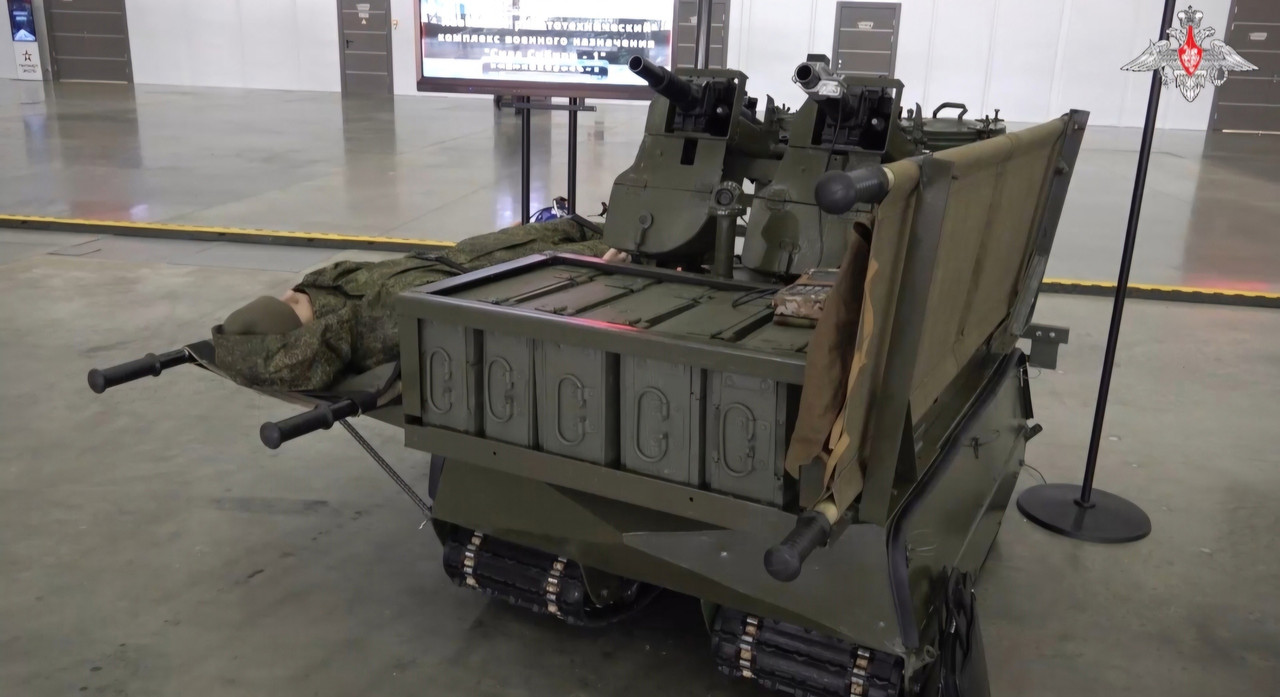
-
On 3/28/2024 at 8:26 PM, LoooSeR said:
https://vk.com/video-123538639_456307273
AI recognition system for drones by Ploshad' system company. A bit glichy in video, usual for NN-based recognition systems used on video footage.
Interesting ways to use this system starts with automatic guidance of ordnance to individual vehicles and soldiers, recon and ends with networked cheap air defense systems in depth against drones, cruise missiles, incoming rockets and so on. Also it counters small EW systems effects significantly if it works reliable enough and widespread.
Ovod-S with AI terminal guidance. Ovod-S is already widely used FPV drone, cost like ~40k rubles. Ploshad' system used in this drone. You can mute the video, footage is what is interesting. Drone used 2 stage system for terminal guidance - neural network and algorithm. AFAIK first one recognize object of attack and second actually track that object and guide drone to it.
-



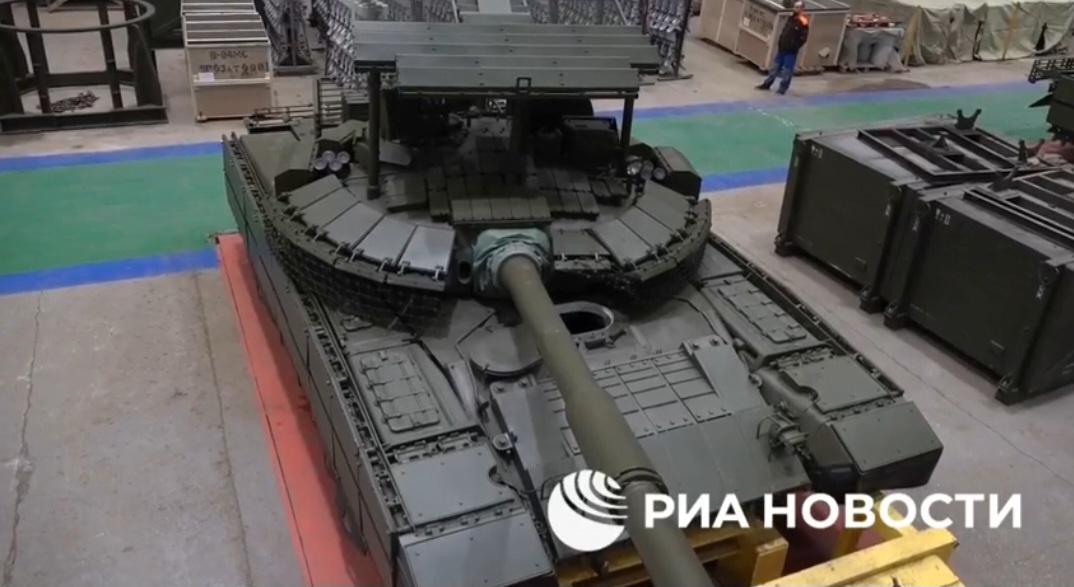
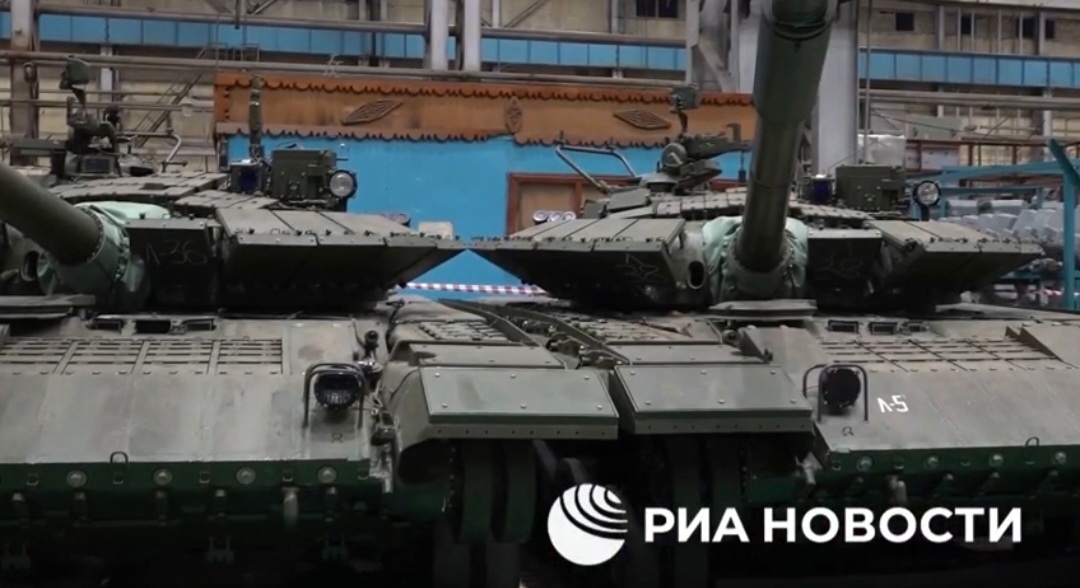
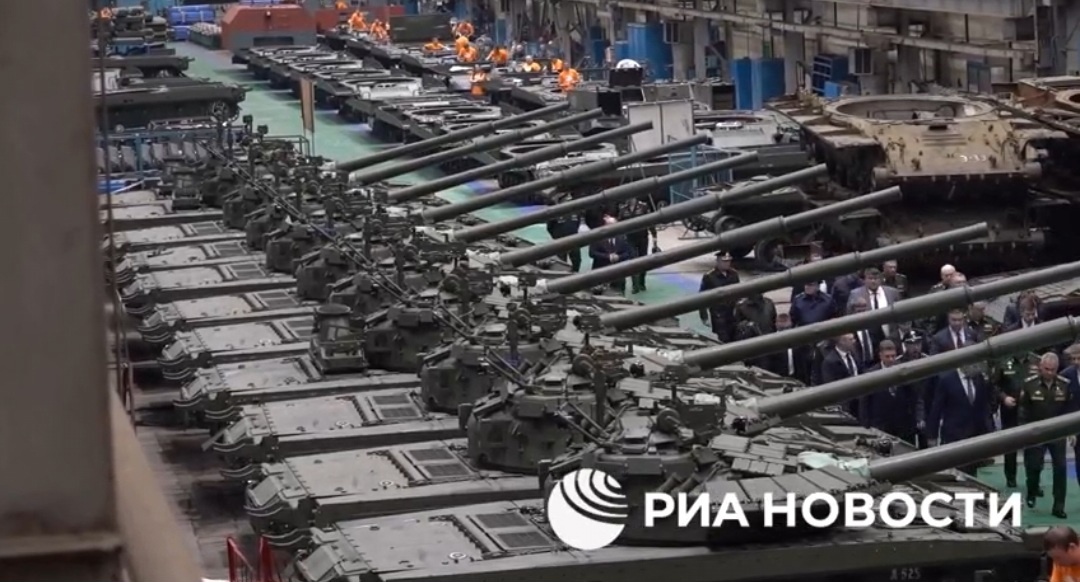
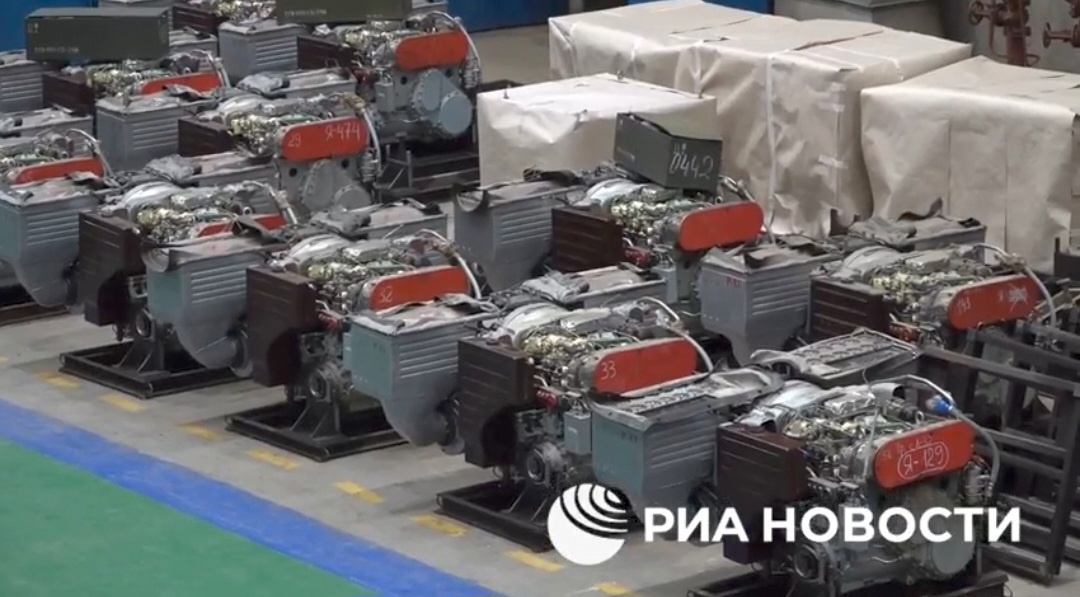
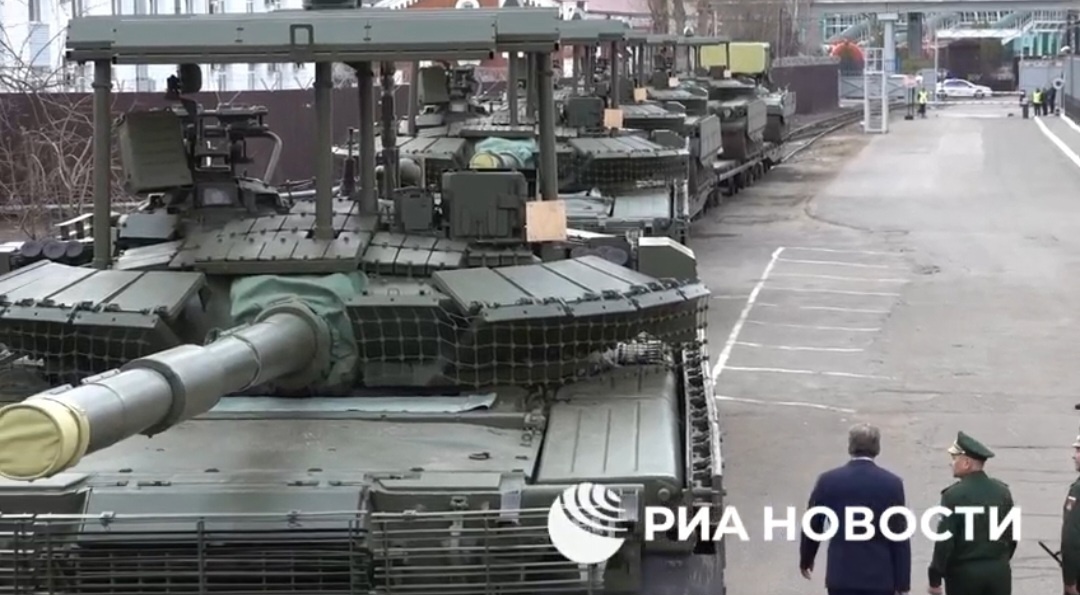
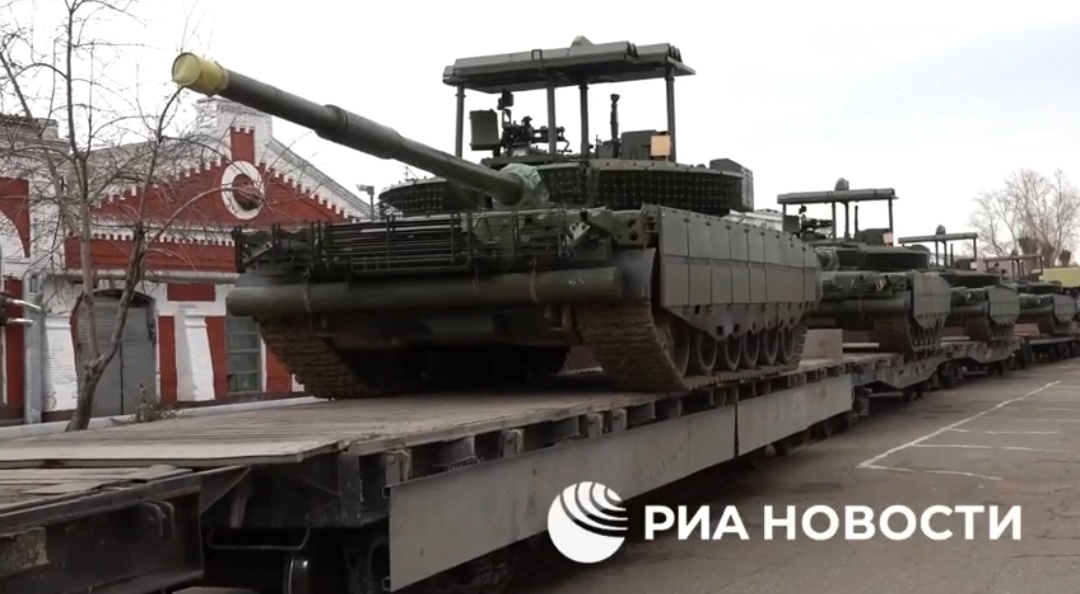




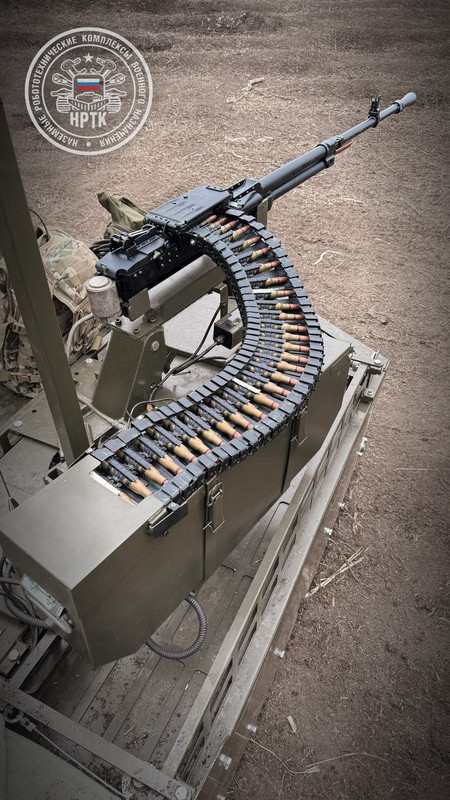
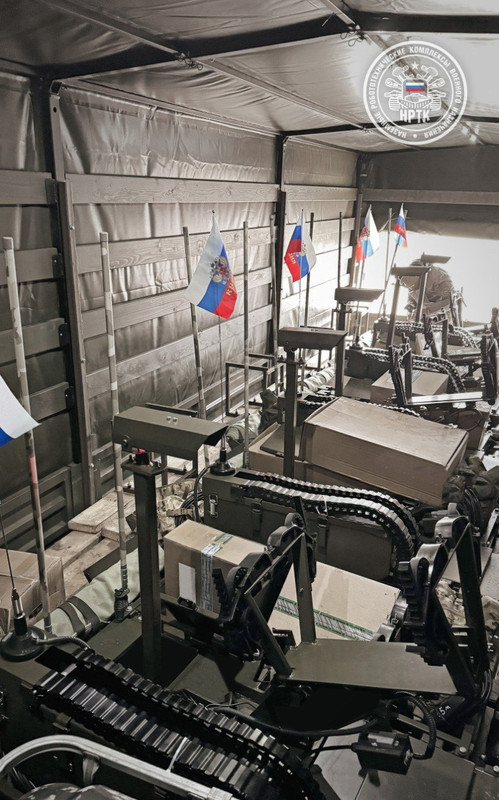
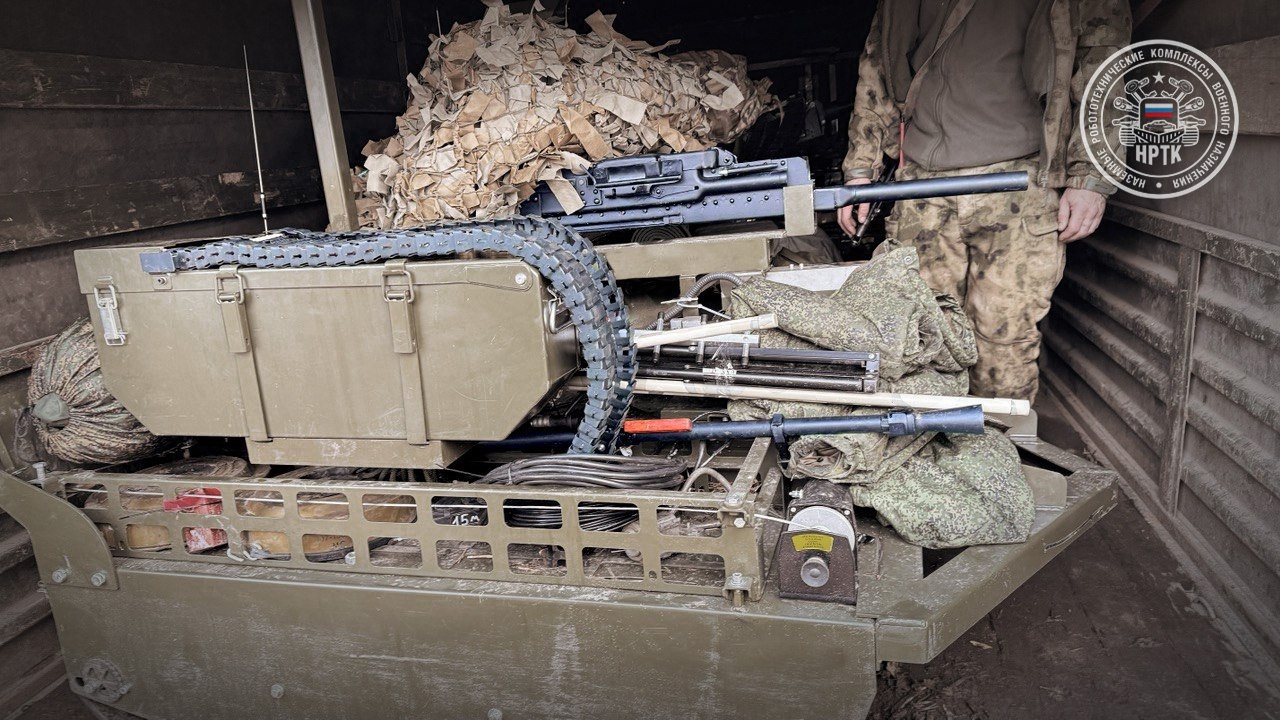
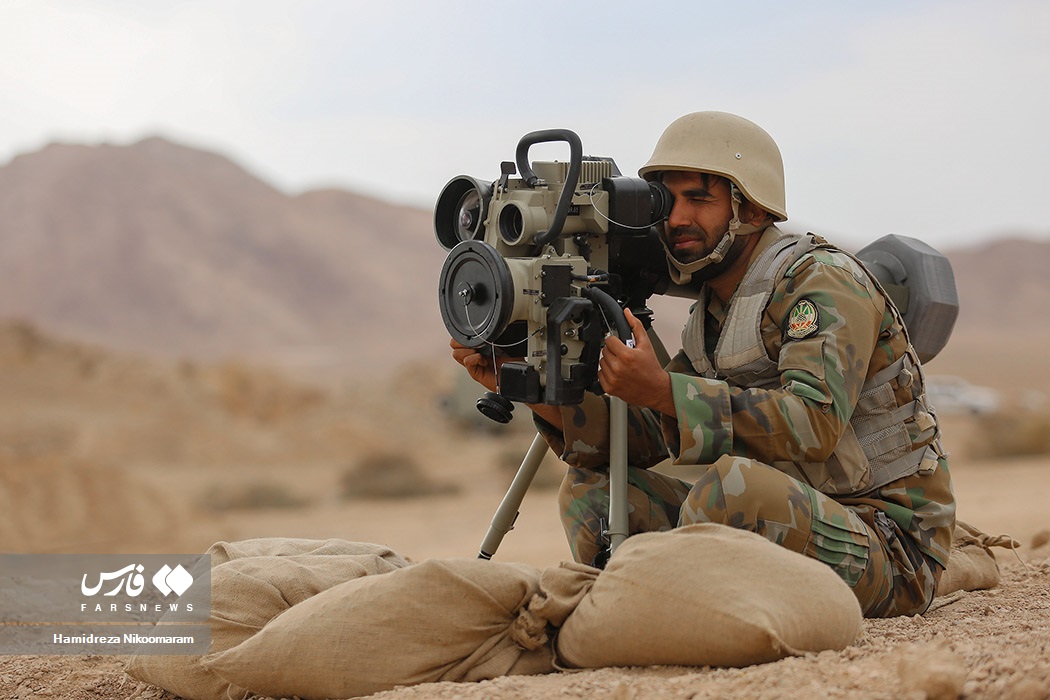

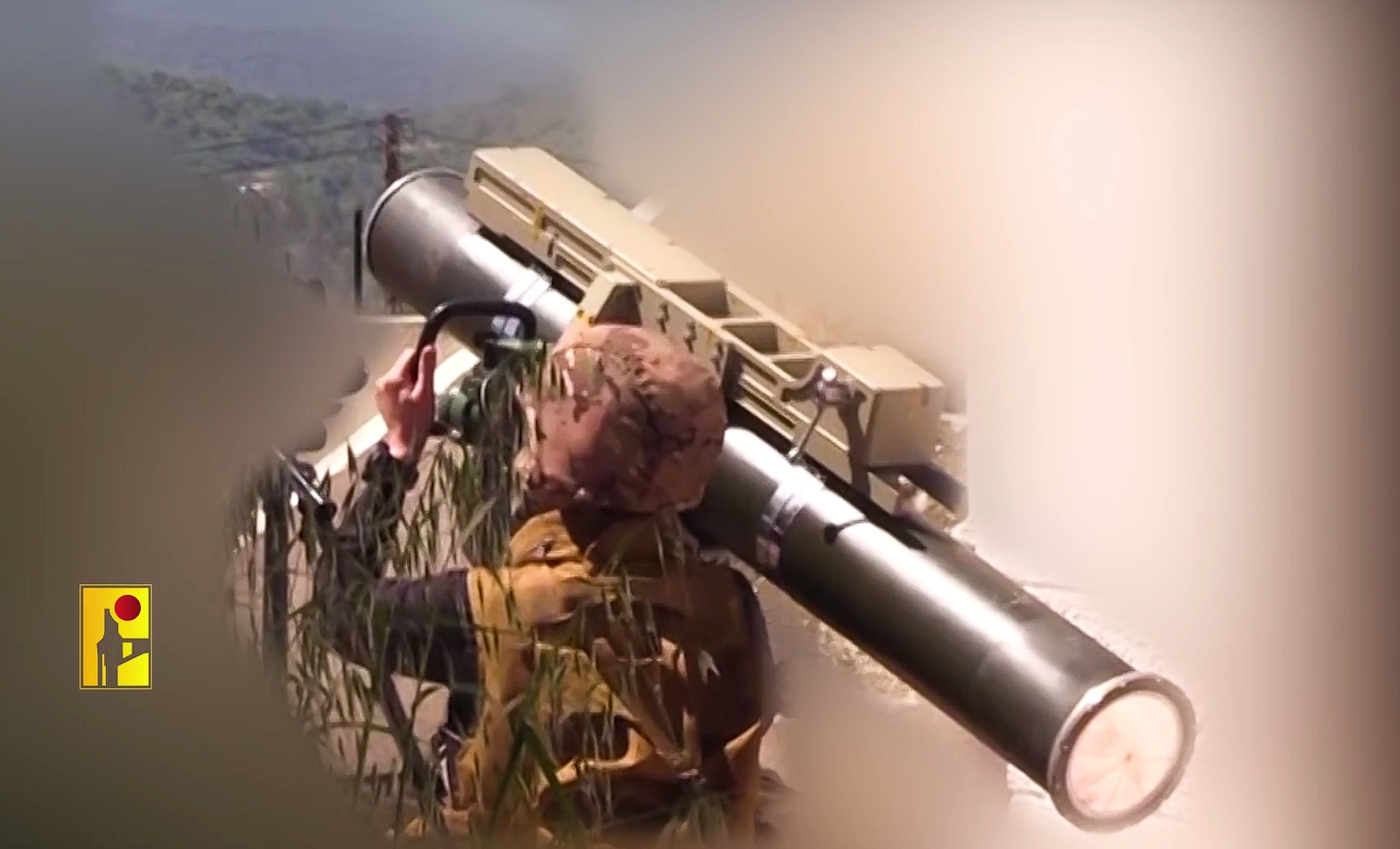
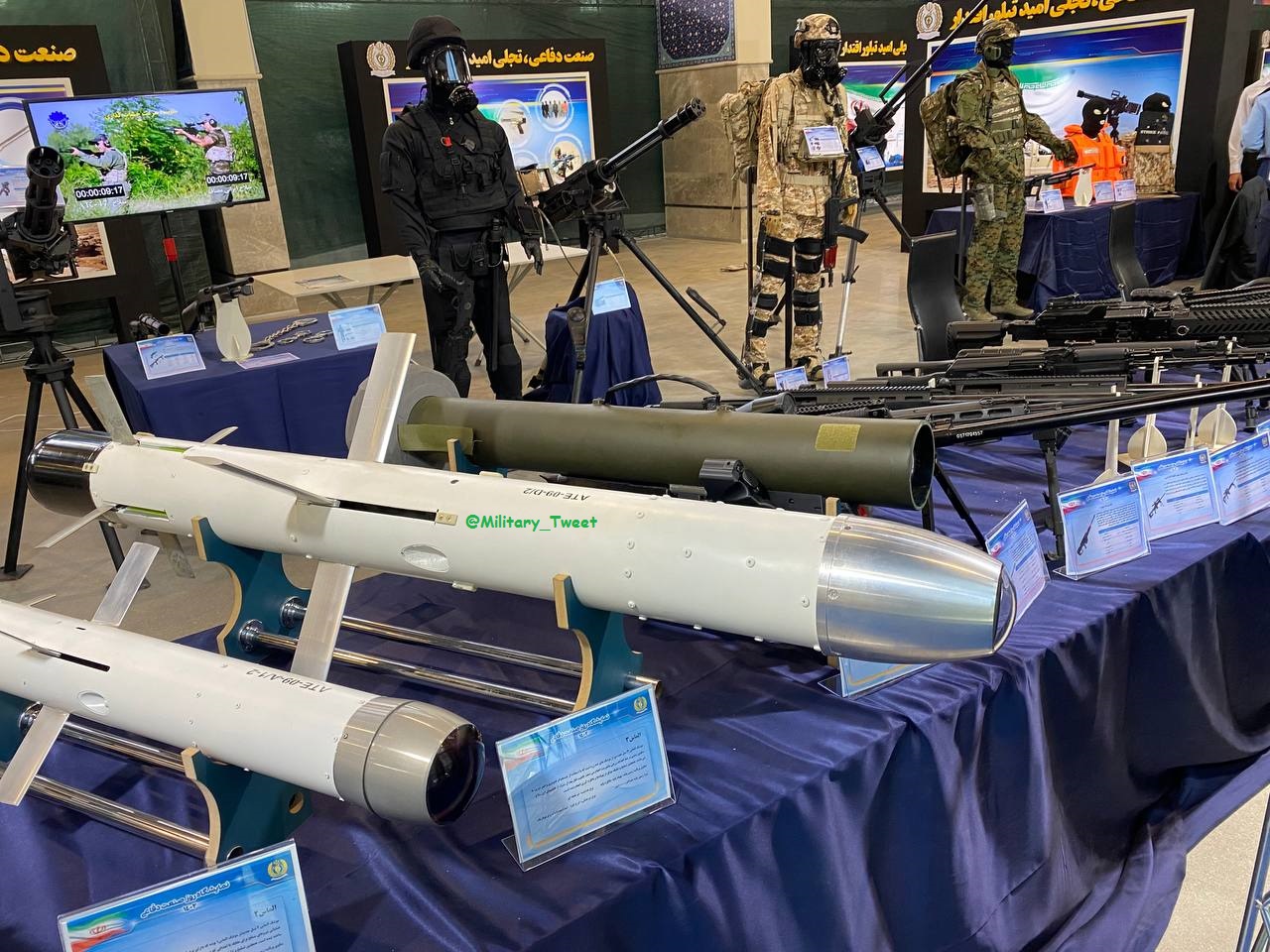








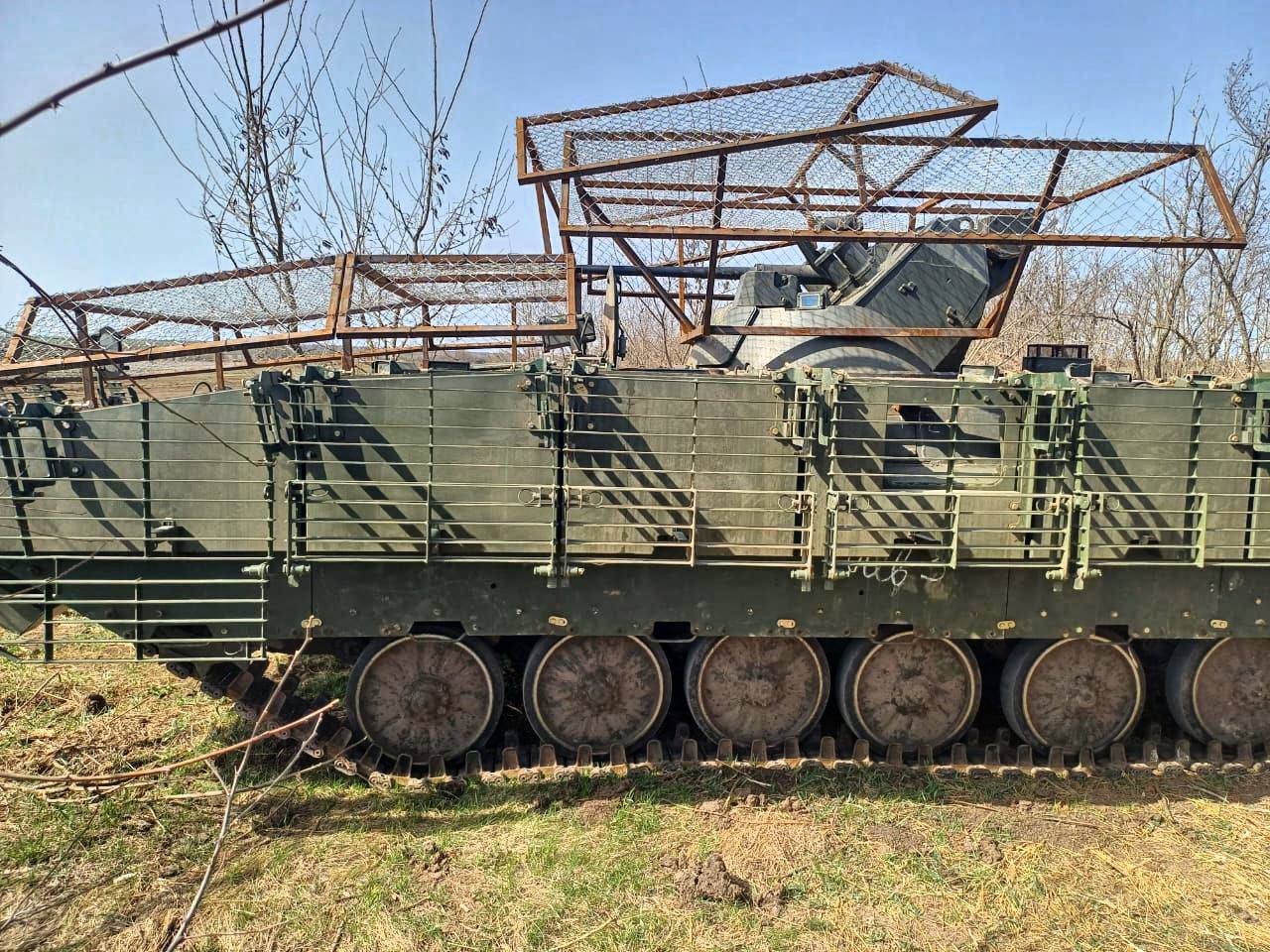
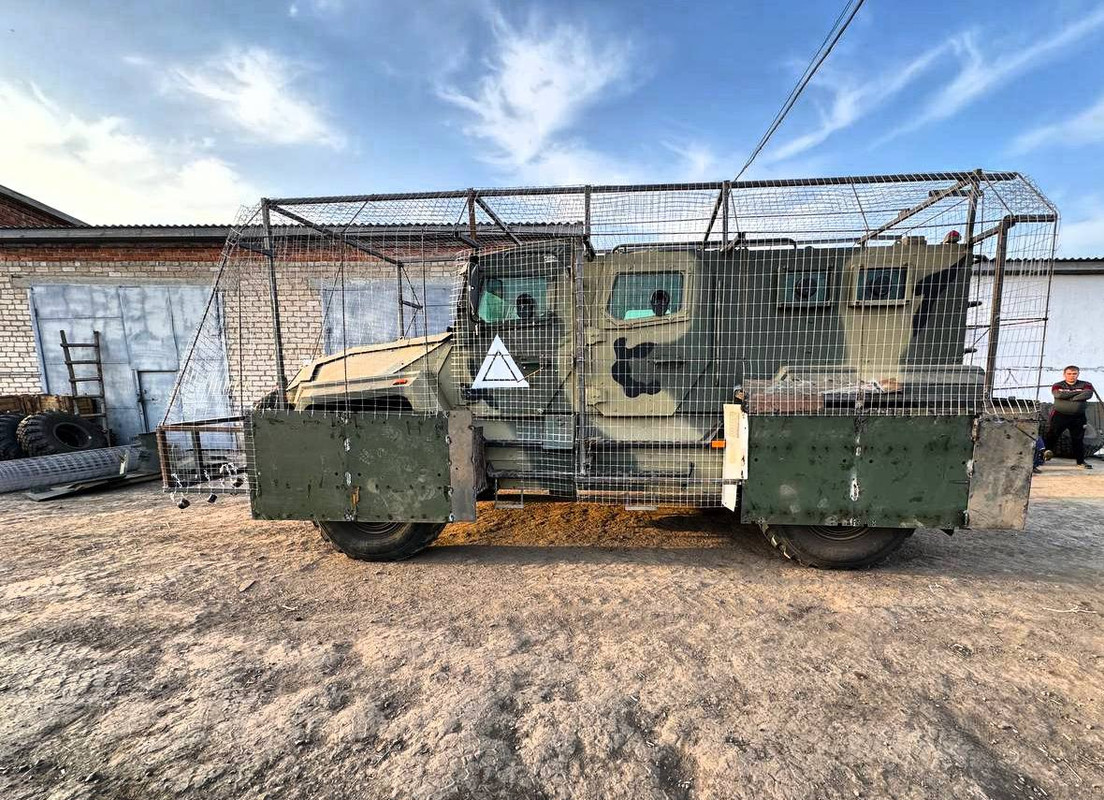
General artillery, SPGs, MLRS and long range ATGMs thread.
in Mechanized Warfare
Posted
From Yuri Lyamin's TG:
Sat+INS guided missile have about 80 km range and 45kg warhead, version with optics+INS+sat guidance have 35kg warhead and 60 km range. This system is within Hermes system parameters (although Hermes have 100 km range as claimed, but no optical guidance, one of versions have semi-automatic laser homing). Interesting precision weapon system, but needs good UAV to work with to be efficient.